|
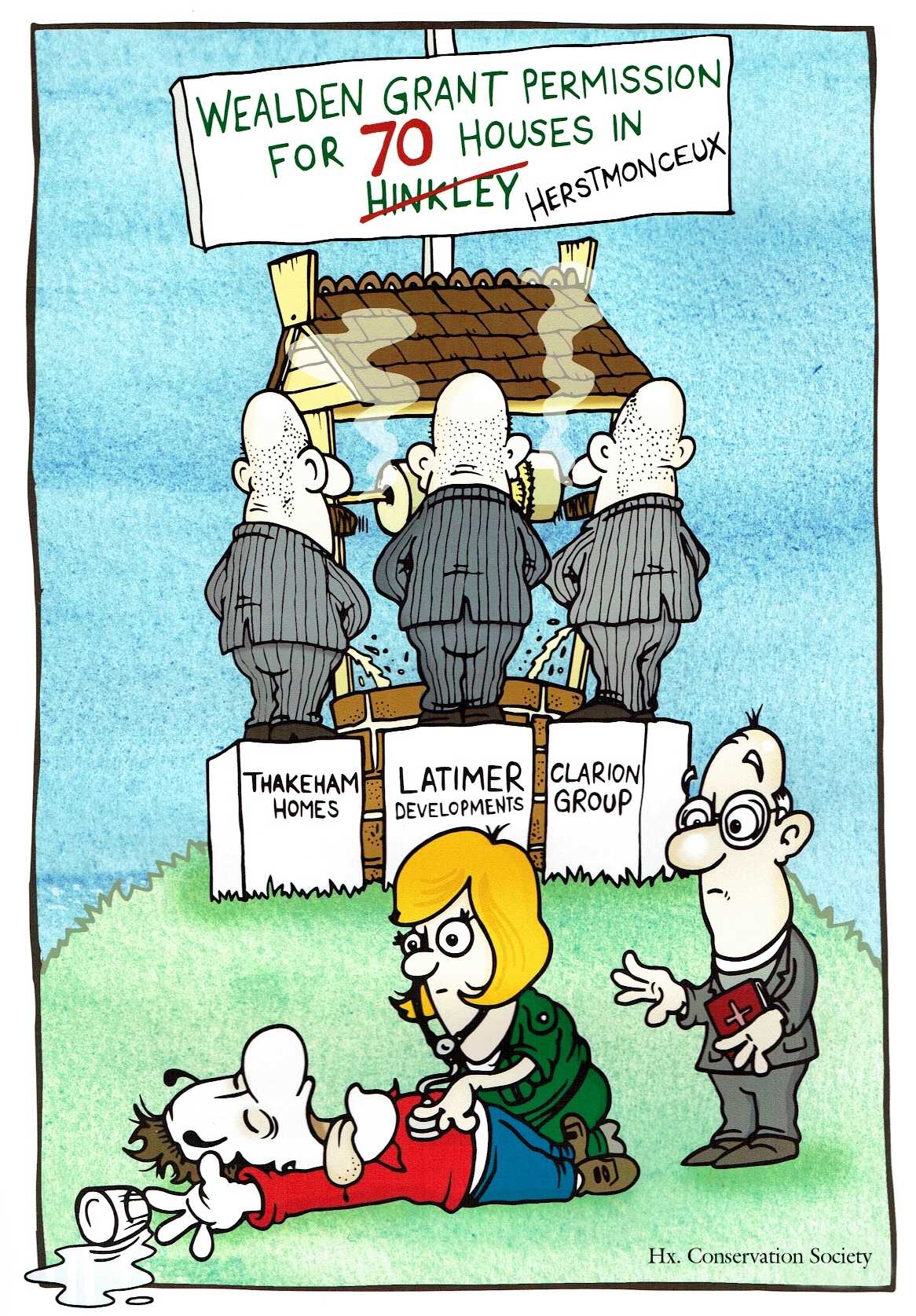
WATER
CONTAMINATION - If houses are built on the hill that supplies the last
surviving well in Herstmonceux, all of those who presently enjoy a
sustainable water supply are likely to be poisoned by pesticides from a
number of the
gardens of the proposed housing - at the moment that looks like being 28
units positioned directly above and in the groundwater soakage line of fire. In addition, where the hard standings of
the proposed 70 houses are to be gully drained to a point lower than the
twin wells, rainwater soakage that supplies the wells will be diverted away
potentially starving the wells of water, save that from the garden areas
and grass verges that are impossible to gully.
The amusing cartoon above portrays the situation that perhaps the present developers
(Clarion,
Latimer,
Thakeham)
were not aware of, when they bought into a situation that they
should have been able to rely on.
Unfortunately, the council concerned and
the advisers to the original applicants (Gleeson
Developments) appear to have been less diligent
than they might have been in the rush to profit from a windfall situation,
only carrying out a desk based study.
The question that is probably on your lips is: "Was that an
oversight, or was it deliberate"? Desk based studies are a cop out.
When an objection is lodged it should trigger a field study.
When
considering pesticide pollution and the unknown effects on humans, let us
not forget the thalidomide babies. Thalidomide became an over-the-counter drug in West
Germany on October 1, 1957. Shortly after the drug was sold in West Germany, between 5,000 and 7,000 infants were born with phocomelia (malformation of the limbs). Only 40% of these children survived.
Gruenenthal patented Thalidomide in the mid-1950s. But investigations in the past two years have confirmed that the German brand-name - Contergan - was owned by the
French pharma-company, Rhone-Poulenc, during the early 1940s, when it was effectively under
Nazi control.
Pesticides are known to affect humans, but the effects may not be apparent
immediately. Should
anyone take that chance?
Another
problem that is rearing it's head with many developments is that
corporations are building what they want to build without constructing the
affordable unit quotient or making improvement to drainage and access
roads that some council's have been kind enough to overlook at the grant
stage with a promise from developers to overcome, when in fact those
developers simply vanish without trace, leaving nobody to pick up the tab.
In other words development is never completed to a stage where flooding
and other contamination measures are safe.
The Environmental Permitting (England and Wales) Regulations 2010
Water Pollution Offences
For England and Wales, the principal water pollution offences are contained in the Environmental Permitting (England and Wales) Regulations 2010: regulations 38(1) and 12(1). The offences are similar to ones that used to be set out in section 85 of the Water Resources Act 1991.
It is an offence to cause or knowingly permit a water discharge activity unless you are complying with an environmental permit or exemption. Things that count as water discharge activities are listed in Schedule 21. They include:
* discharging poisonous, noxious or polluting matter or solid waste matter into inland freshwater, coastal waters and relevant territorial waters. The legislation does not define poisonous, noxious or polluting. These words are normally given their ordinary meanings.
*
discharging trade or sewage effluent into inland freshwater, coastal waters and relevant territorial waters
*
cutting or uprooting substantial amounts of vegetation in any inland freshwaters, without taking reasonable steps to remove it.
It is also an offence to cause or knowingly permit a groundwater activity unless you are complying with an environmental permit or exemption. Broadly speaking, groundwater activities cover discharges of pollutants directly into groundwater, or indirectly. An example of an indirect discharge would be where some polluting liquid like paint is poured onto the ground and gets into the groundwater by percolating down through the soil. Details of exactly what counts as a groundwater activity are given in Schedule 22 to the Regulations. This part of the legislation is quite complicated, because it is giving effect to three pieces of
European legislation - the Groundwater Directive, the Groundwater Daughter Directive and the Water Framework Directive.
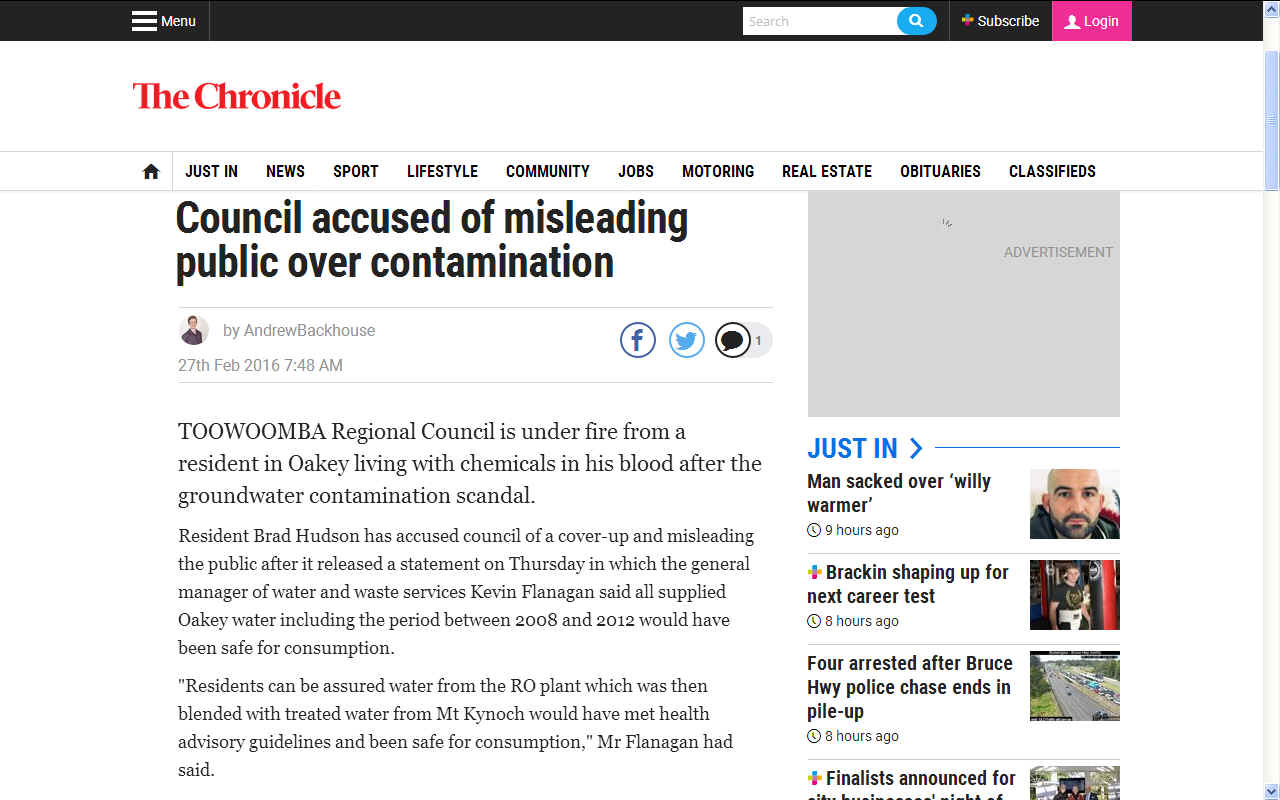
THE CHRONICLE 27 FEB 2016 - COUNCIL ACCUSED OF MISLEADING PUBLIC
- TOOWOOMBA Regional Council is under fire from a resident in Oakey living with chemicals in his blood after the groundwater contamination scandal.
Resident Brad Hudson has accused council of a cover-up and misleading the public after it released a statement on Thursday in which the general manager of water and waste services Kevin Flanagan said all supplied Oakey water including the period between 2008 and 2012 would have been safe for consumption.
"Residents can be assured water from the RO plant which was then blended with treated water from Mt Kynoch would have met health advisory guidelines and been safe for consumption," Mr Flanagan had said.
But suspicions that residents were ingesting chemicals through the town water, which was being mixed with bore water contaminated with chemicals Perfluorooctane sulphonate and Perfluorooctanoic acid, have remained.
The bores were contaminated after decades of use of poisonous firefighting foam by the Oakey Army Aviation Centre.
Mr Hudson, who has 240 parts a million of the chemicals in his blood, said council wasn't even testing for the chemicals at that time and couldn't have known if they were tainted.
He claims to have spoken to a council employee who admitted council was only making an "educated guess" about contamination during that period.
Council told The Chronicle yesterday that: "Council first became aware of potential groundwater contamination affecting council bores when it was notified by the Department of Defence in May 2014.
"As there was no prior knowledge of the potential contamination prior to May 2014 there was no reason why testing for an unknown chemical would have been required for the period the RO plant was operating from October 15, 2008 until ceasing operation on November 30, 2012."
Council has since undertaken testing.
"Even though the Oakey Reverse Osmosis Plant has not operated since November 2012 and has not supplemented water to the Oakey town water supply, council has undertaken a program to sample and monitor ongoing water quality for all five council bores in the Oakey bore field," a spokesman said.
Shine Lawyers partner Peter Shannon, who has dealt extensively with the contamination issue, stopped short of saying the firm was investigating council over its role.
He said while Defence was the ultimate party responsible the firm was looking at "all angles".
Chemicals in the water:
1. PFOS: Shown to affect the immune system of male mice
2. PFOA: Animal studies show developmental toxicity including reduced birth size and physical developmental delays
Causing or knowingly permitting
The courts take a broad approach when deciding whether a person (or a company) caused a water discharge or groundwater activity. There is no need to show that a person knew about the activity or intended it. If pollution is due to a chain of events, a person may be regarded as having caused it even if someone else's actions immediately triggered the pollution. Take the example of a
river that is polluted because an unknown person turns on the tap of a
diesel tank stored by the river bank. Depending on the exact circumstances, the company that owns the tank as part of their operations might be charged with causing the pollution. This strict approach is why this is know as a strict liability offence.
Knowingly permitting includes cases where a person (or company) is aware of a polluting incident but refuses to take steps to stop the pollution.
Penalties
If a person is tried and convicted in a Magistrates Court, they could be fined any amount and/or sentenced to up to twelve months imprisonment. If they are tried and convicted in a
Crown Court they could face an unlimited fine and/or be sentenced to up to five years imprisonment.
Defences
It is a defence to a water pollution offence if the activity was done in an emergency in order to avoid danger to
human health, provided that reasonable steps were taken to minimise
pollution and notify the regulator promptly. It is also a defence if the discharge is from a mine that was abandoned before 2000.
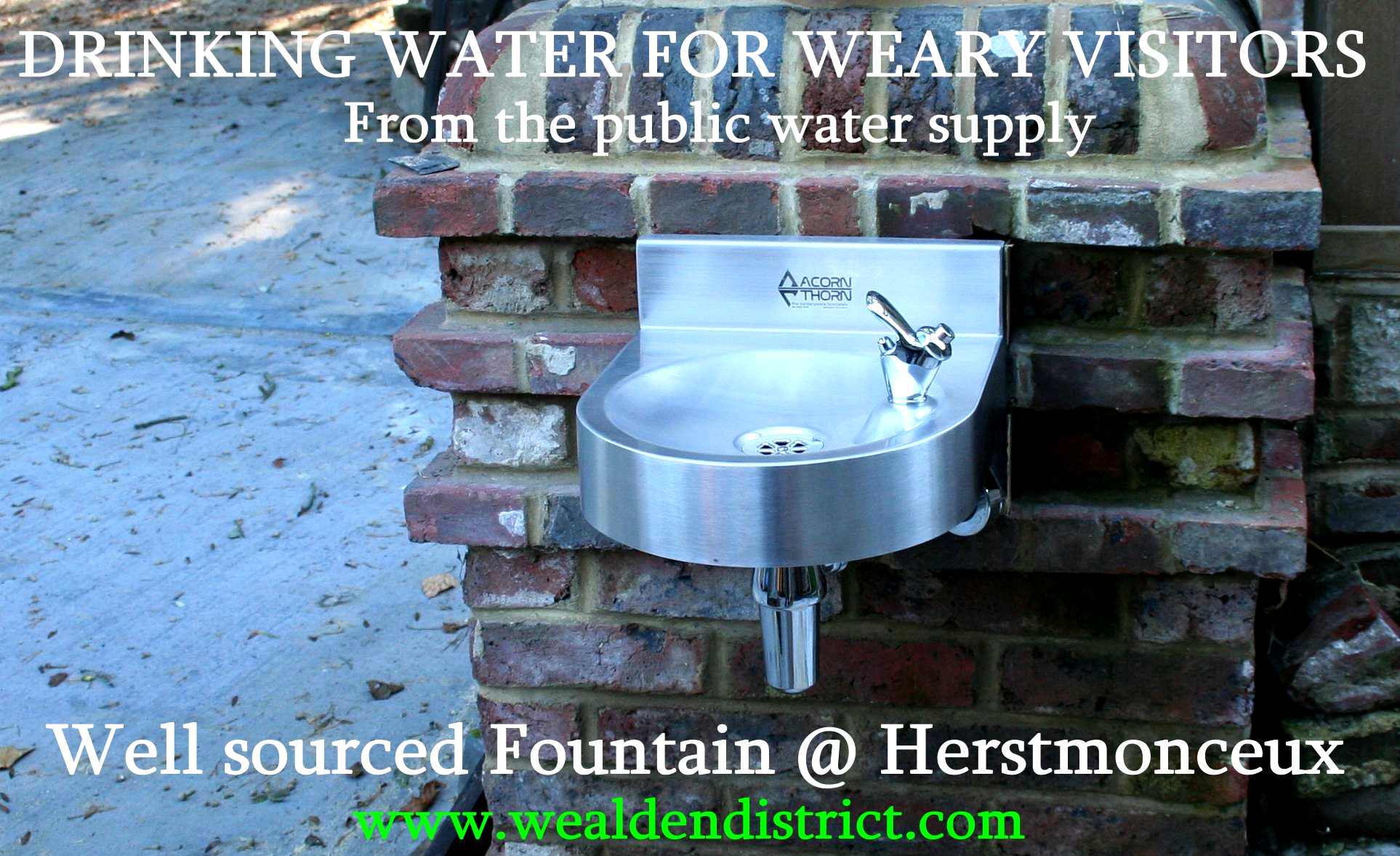
PUBLIC
WATER SUPPLY - What a shock to visitors to Herstmonceux when they
come to drink from this fountain that is fed from the old wells, and find
themselves with DNA problems or other contamination issues that will only
become apparent when it is too late. You may not find out about your
illness for quite a while, meantime the culprits have spent their ill
gotten gains and long since covered their trail. Does this qualify as Corporate
Manslaughter? In causing death, does it have to be near instant as in
the fire in a tall building or can it be over a prolonged period of time.
We believe that anything that shortens a life is causing death and those
responsible for shortening anyone's life should be prosecuted.
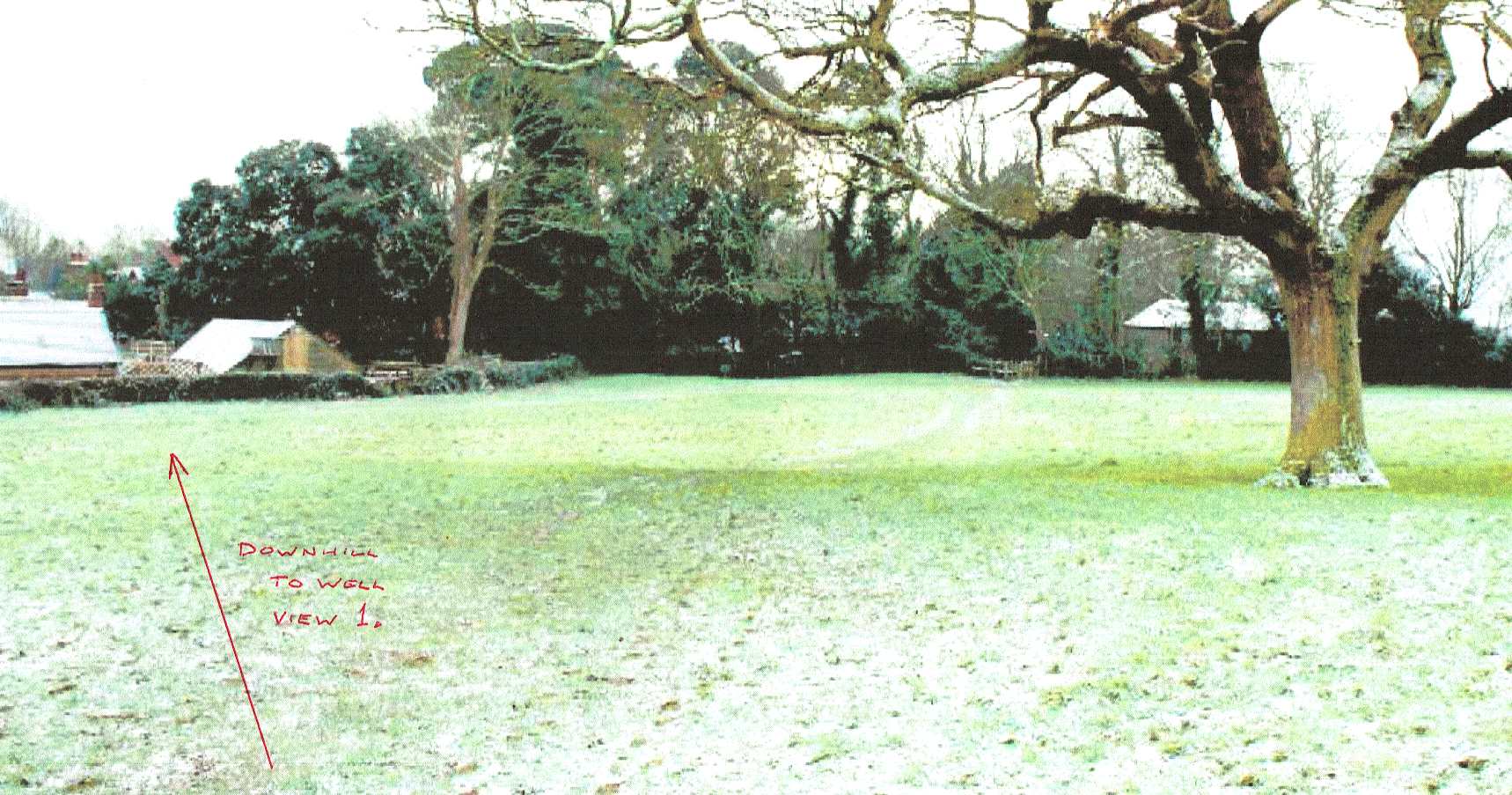
DOWNHILL
ALL THE WAY - This is view 2 on the plan below. As you may know
water is the subject of gravity and so travels downhill. The steeper the
gradient, the faster it goes and the angle determines where it goes.
Around 28 gardens will ensure that the old wells in Lime Park are
drenched in herbicides from the proposed houses in a 100 meter radius.
Without this slope a 50 meter radius could provide some protections
according to the Environment
Agency.
Popular gardening chemicals like glyphosate and the harm they do, being toxic to Human
DNA at concentrations 450 times lower than used in agricultural applications. Ethoxylated adjuvants in glyphosate-based herbicides have been found to be “active principles of human cell toxicity.” Cell damage and even cell death can occur at the residual levels found on Roundup-treated food crops, as well as lawns and gardens where Roundup is applied for weed control. Liver, embryonic and placental cell lines are adversely affected by glyphosate at doses as low as 1 ppm.
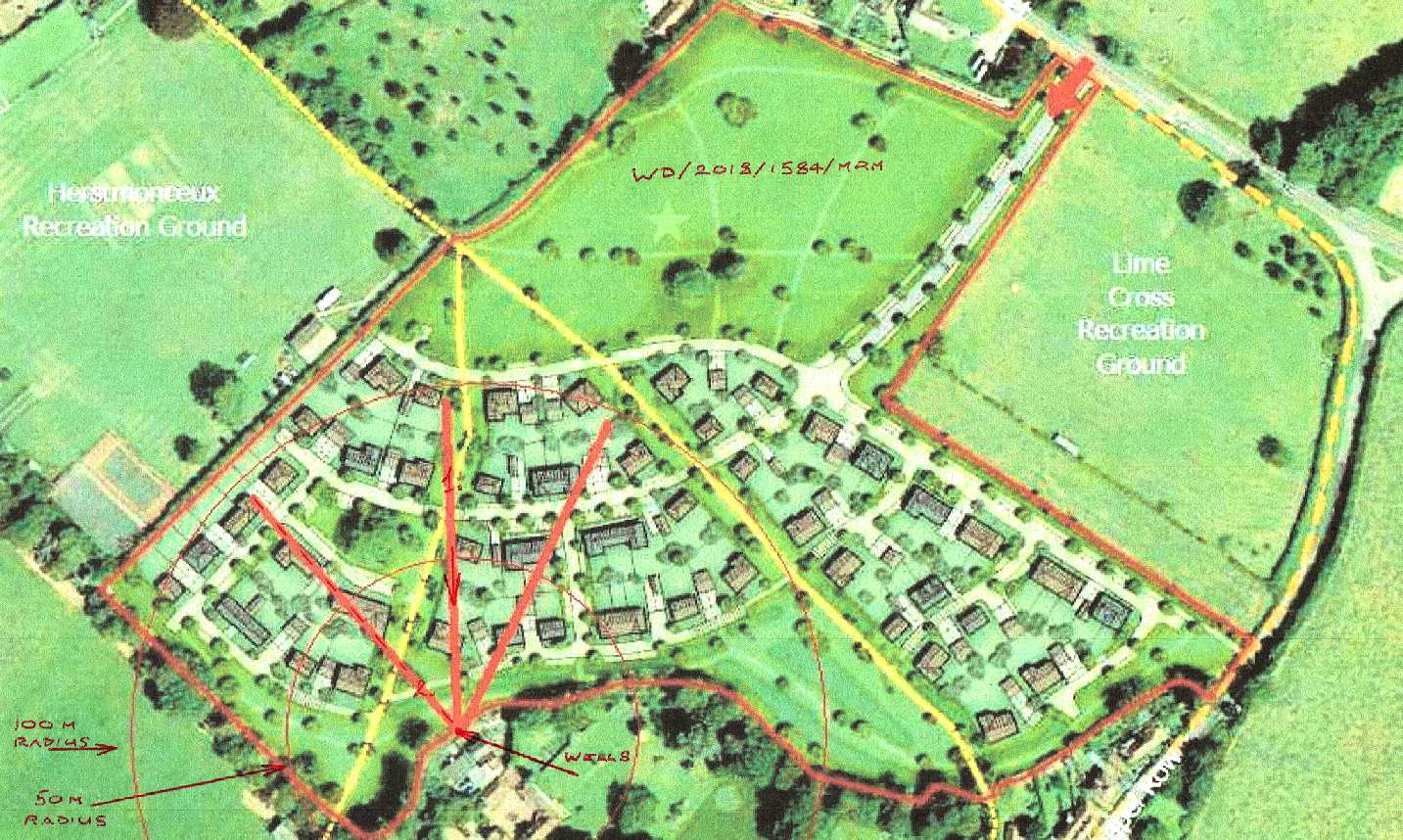
RADIUS
IMPACT - This proposal could not have been better planned to impact
on the old wells at Herstmonceux. The developers claim that they did not
know about the well being a public water supply. Does that mean that
Wealden's councillors were not told about this being a problem when they
passed the outline application in 2015? We suspect that is the case but
have yet to hear the presentation by Kelvin Williams, that apparently,
Wealden did not keep, according to recent correspondence. We are sure
they will find a copy if they really want to, would you agree?
In
addition, the Pevensey and Cuckmere Water Level Management Board concluded that the developer's water management ‘strategy’ was certain to result in flooding on site and off site (in Lime Park) because the pipes into the ponds are far too small/not designed for heavy duty runoff, and there are legal obstacles to changing them.
Building in yet more water pollution issues, but this time at the other
end of the field, where the developer has proposed dealing with surface
water through a pond not under the control of the developer, so leaving
the developer unable to provide what is required in law if such
application if granted.
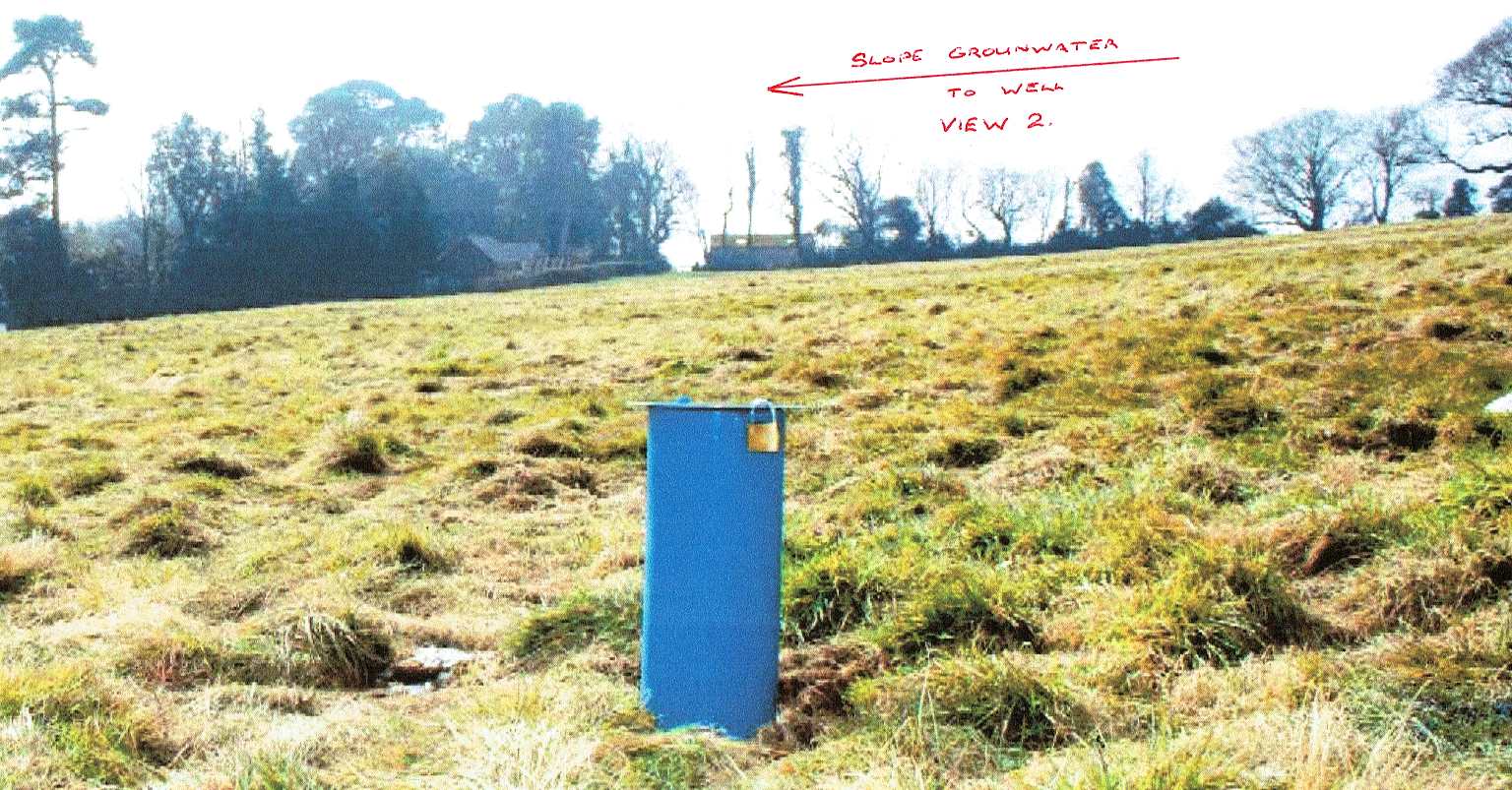
DOWNHILL
ALL THE WAY - Yup. As if you need more proof, this photograph that
was available online for the members and officers of Wealden District
Council appears to have been ignored. Clearly, this hill slopes down
to the well, where the buildings behind are dug into the bank, so causing
a build up of water pressure - and pollution concentrations - in the
well.
What
is more remarkable than that is that Clarion, Thakeham and Latimer
property developers are advertising that this 70 home development is set
for 2021, even though the grant has yet to be given as at 27 September
2018. How can anyone say that when there is supposed to be a democratic
vote with 12 members of the Area Plans South Committee each to have a say,
as they represent the public. The only way anyone can say something like
that for sure is if the vote is a rubber
stamping exercise and the deal has already been done. If that is the case
we'd like to hear from anyone who can let us in on the secret (in
confidence), or indeed the Council who may care to issue a denial and
provide clarification.
 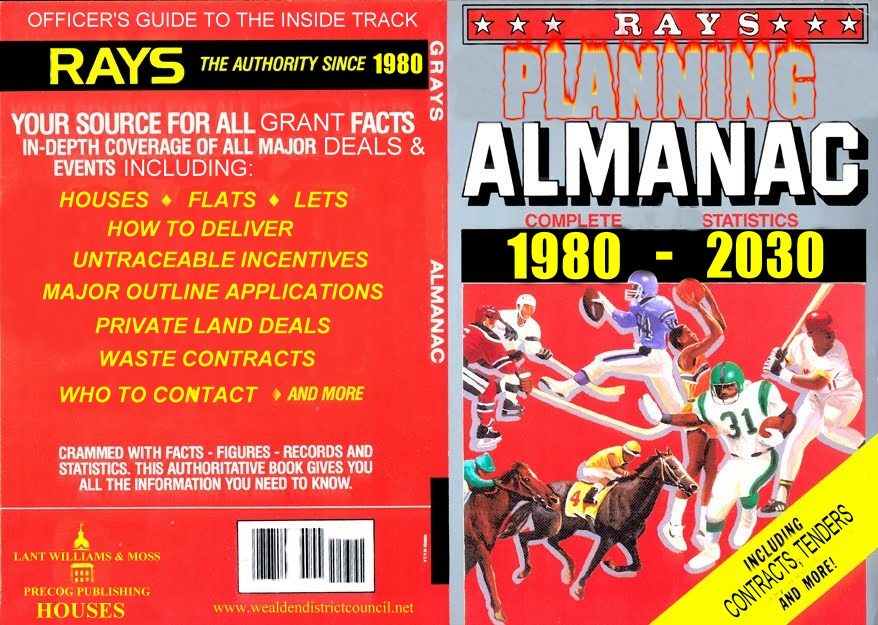
The
Developers have provided no alternative scenarios. Such supreme confidence
can only come from some kind of indication from within Wealden that they
do not need to consider alternatives. It's as if they have the Almanac
from Back
to the Future and already know the result, Like Biff Tannen, the fictional character in the Back to the Future
trilogy played by Thomas Wilson. Remember Grays Sporting Almanac? Now
imagine a Planning Almanac and that you have Doc Brown's time machine to
go back and purchase land that you knew you'd get planning permission for.
That would be a license to print money, just the way Biff did it in BTTF2.
A great series of films by the way and brilliant acting from Mr Wilson.

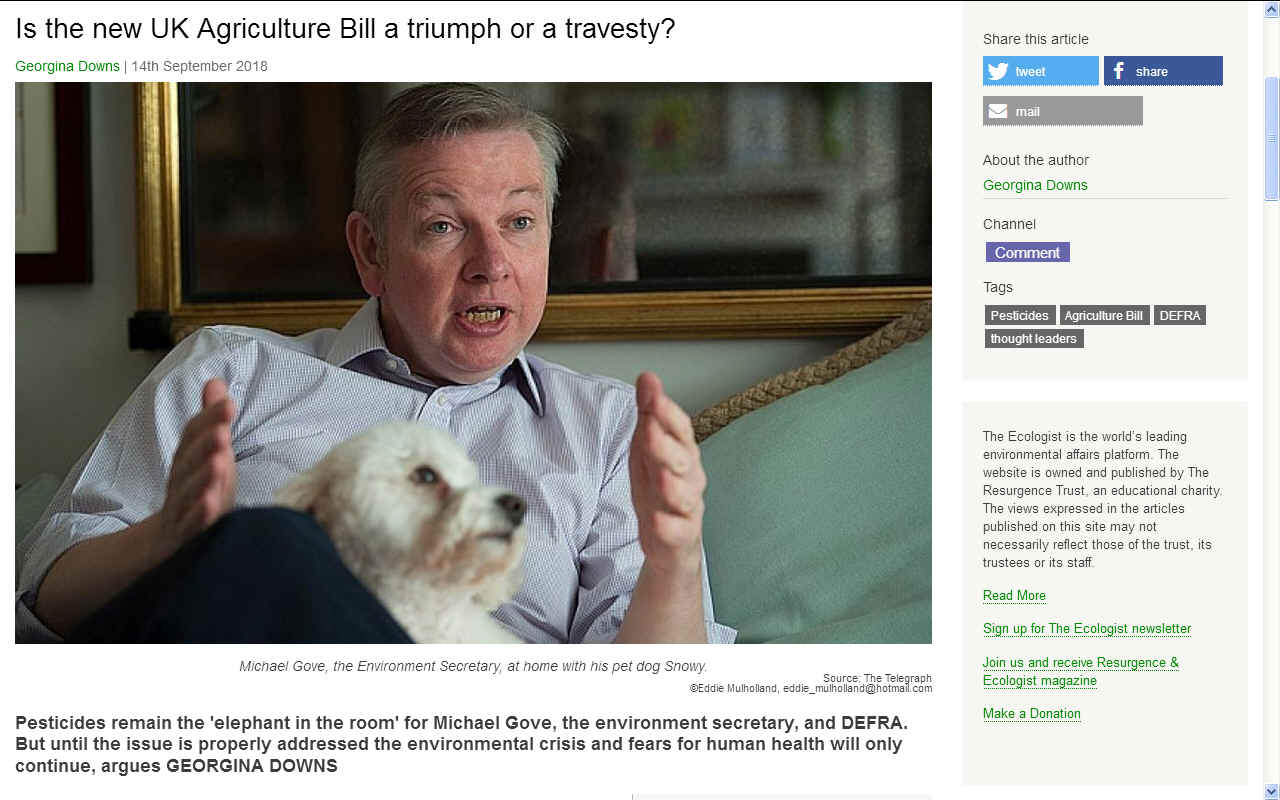
THERE
ARE NONE SO BLIND AS THOSE WHO WILL NOT SEE - Pesticides remain the 'elephant in the room' for
Michael
Gove, the environment secretary, and DEFRA. But until the issue is properly addressed the environmental crisis and fears for human health will only continue, argues GEORGINA DOWNS.
The long awaited Agriculture Bill finally made its first appearance this week when it was introduced before Parliament. This is the UK Government’s plan on what UK farming will look like post Brexit.
There is no reference to the protection of human health or public health in the Agriculture Bill as regards to farmers, the main users of pesticides - despite the DEFRA Consultation that preceded the publication of the Agriculture Bill being called Health and Harmony.
In fact, it seems that the only notable references to the health of 'people' are in relation to the functions of public authorities.
Human health - There is no specific mention of pesticides except in three places when defining persons “closely connected” with an agri-food supply chain as including those supplying pesticides.
Further, there does not appear to be any specific mention of agro-chemicals or chemicals at all.
There is only a vague reference in a couple of places to "preventing, reducing or protecting from environmental hazards" - but with no definition of those hazards and so as said nothing specifically on either pesticides or human health and certainly nothing in relation to protecting human health from pesticides!
Therefore, there is no recognition or even any specific reference in the Agriculture Bill - or Mr Gove's statements - to the continued risks associated with the continued use of pesticides and other agro-chemicals on crop fields across the UK.
Pesticides remain the biggest contributor of damage, pollution, and contamination of the air, soil, water and overall environment in agricultural areas, as well as damaging human health.
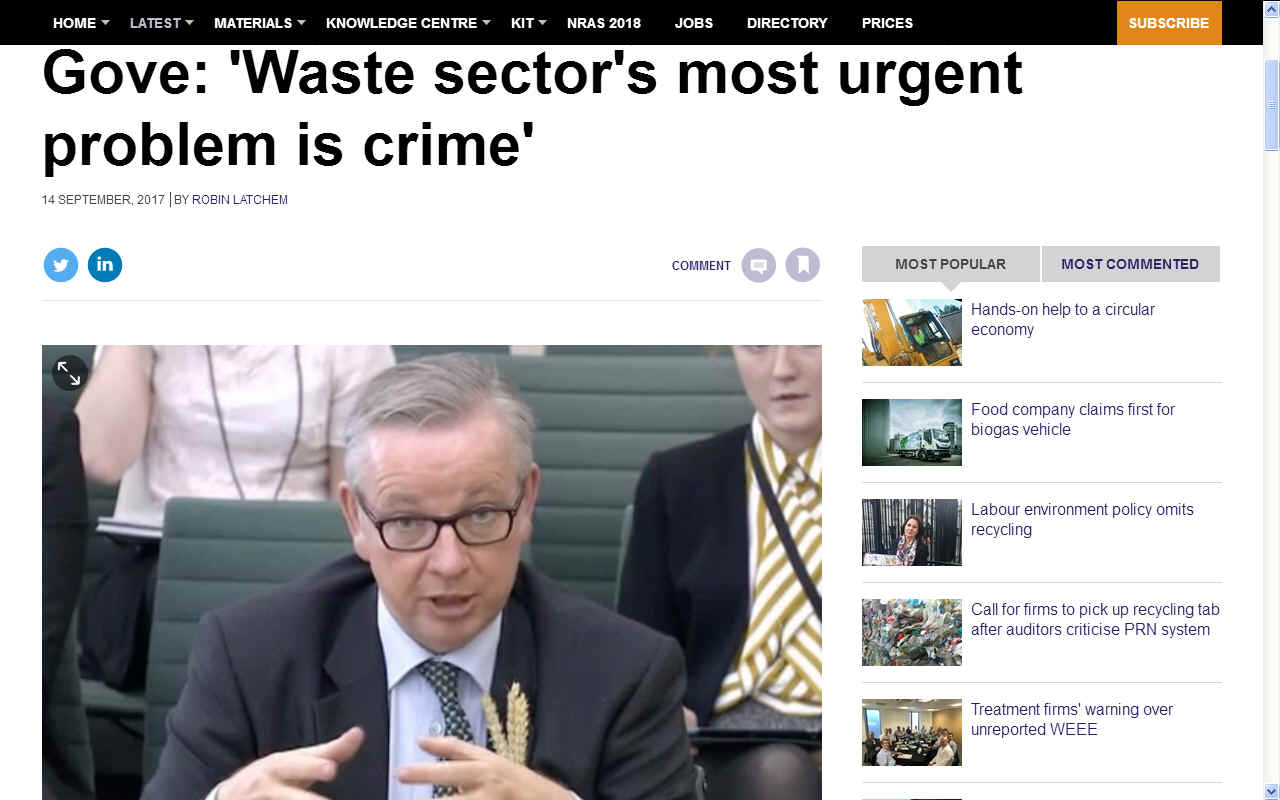
Agricultural pesticides
- This means that much of the perceived benefits of the proposed new Agriculture Bill that Michael Gove and DEFRA are advocating simply will not materialise.
The widespread use of pesticides and other toxic chemicals in our existing farming system appears to be the Government’s ‘elephant in the room’ because of DEFRA's reluctance to mention it - let alone focus on it.
Agriculture accounts for more than 70% of land use in the UK, and has a major influence on our environment. Considering that currently only around 3% of farmland in the UK is organic, then the vast majority of the 70% of land that is used in the UK for
agriculture will be land that is regularly sprayed under the existing chemical intensive conventional farming system.
Latest Government statistics show that regarding just pesticides alone (ie. not including chemical fertilisers and all the other agro chemicals used in conventional
farming), in 2014 the total area treated with pesticides on agricultural and horticultural crops was 80,107,993 hectares, with the total weight applied 17,757,242 kg.
The reality of crop spraying in the countryside is that it involves cocktails of pesticides, as agricultural pesticides are rarely used individually but commonly sprayed in mixtures - quite often a mixture will consist of 4 or 5 different products.
Rural citizens - There are approx. 2,000 pesticide products currently approved for UK agricultural use and each product formulation in itself can contain a number of active ingredients, as well as other hazardous chemicals, such as solvents, surfactants, co-formulants (and many of which can have adverse effects on human health in their own right, even before considering any potential synergistic effects in a chemical mixture).
Therefore if the Government continues to permit the release of innumerable cocktails of pesticides and other harmful chemicals over the majority of UK land then how will farming change in a post Brexit landscape? The answer is simple. It won’t.
The pollution and contamination of our health and the environment must be stopped at the highest level, which means if such harmful farming practices are no longer permitted by the Government then farmers would have to adapt and find alternative methods that do not put public health and the environment at the risk of harm.
It is concrete and definitive action that is needed to clean up UK agriculture. This is very long overdue, especially regarding the protection of human health and lives.
For over 7 decades rural residents and communities have not been protected from the risks that pesticides pose to us and our families, and there have been no mandatory measures in the UK specifically for the protection of rural citizens.
Chemical-intensive - While operators generally have protection when using agricultural pesticides – such as use of personal protective equipment, respirators, and will be in filtered cabs – rural residents and communities have absolutely no protection at all. In any event residents would obviously not be expected to wear such equipment on their own property and land!
There are many thousands of known cases of adverse health impacts reported by rural residents across the UK, but which the Government has continued to blatantly ignore. Obviously with millions of rural residents exposed in crop sprayed areas there will undoubtedly be many more unreported cases.
A few examples of the truly harrowing experiences from other affected rural residents can be seen within my ongoing petition which calls on the Prime Minister
Theresa
May, and DEFRA Secretary Michael Gove, to urgently secure the protection of rural residents and communities by banning all crop spraying and use of any pesticides near residents’ homes, schools, and children’s playgrounds.
The campaign petition has also been signed by a number of prominent figures including Hillsborough QC Michael Mansfield, Stanley Johnson, Jonathon Porritt, Gordon Roddick, Ben Goldsmith,
Caroline Lucas MP, among others.
A number of recent major international reports have detailed the damage to human health from existing industrial and chemical-intensive conventional food and farming systems.
For example: The United Nations report of the Special Rapporteur on the right to food in March 2017 that found that chronic exposure to agricultural pesticides has been associated with several diseases and conditions including cancer, developmental disorders, and sterility, and that those living near crop fields are particularly vulnerable to exposure from these chemicals;
The
IPES-FOOD report that outlines the unacceptable harm caused by the current chemical farming systems; exposes just some of the astronomical health costs externalized by the current system; and finds an urgent and “overwhelming case for action.” The report found that many of the severest health conditions afflicting populations around the world – from respiratory diseases to a range of cancers – are linked to industrial food and farming practices, including chemical-intensive agriculture;
The
Lancet Commission on pollution and health report on the global deaths and chronic diseases from outdoor air pollution, and which included from the use of pesticides. In fact the lead author was reported as saying that his biggest concern is the impact of the hundreds of industrial chemicals and pesticides already widely dispersed around the world.
Wiped out
- The 2017 UN Report of the Special Rapporteur on the right to food concluded that moving away from pesticide-reliant industrial agriculture to non-chemical farming methods should now be a political priority in all countries globally.
The new post Brexit UK Agriculture Bill and policy provides a real opportunity for the UK to adopt such a non-chemical farming policy in order to no longer use toxic chemicals in the production of our food.
This would then protect not only the health of rural residents and communities, as well as other members of the public, but also the environment, wildlife, pollinators, other species, and biodiversity.
So here's hoping that Parliamentarians will amend the Agriculture Bill to reflect the health and environmental protections that are so urgently needed.
The origins of traditional farming methods did not include dependence on chemical inputs for mass production. Such poisons should never have had any place in the air we breathe, food we eat, and environment we live in.
Therefore it is a complete paradigm shift that is needed to move away from the use of pesticides in farming/agriculture altogether. Such a move is absolutely integral to the health and existence of all those living in the British countryside, as well as other species that are being wiped out from the continued use of such toxic chemicals.
The Author: Georgina Downs is a journalist and campaigner. She runs the UK Pesticides Campaign, which specifically represents rural residents affected by pesticides sprayed in the locality of residents’ homes, as well as schools, playgrounds, among other areas.
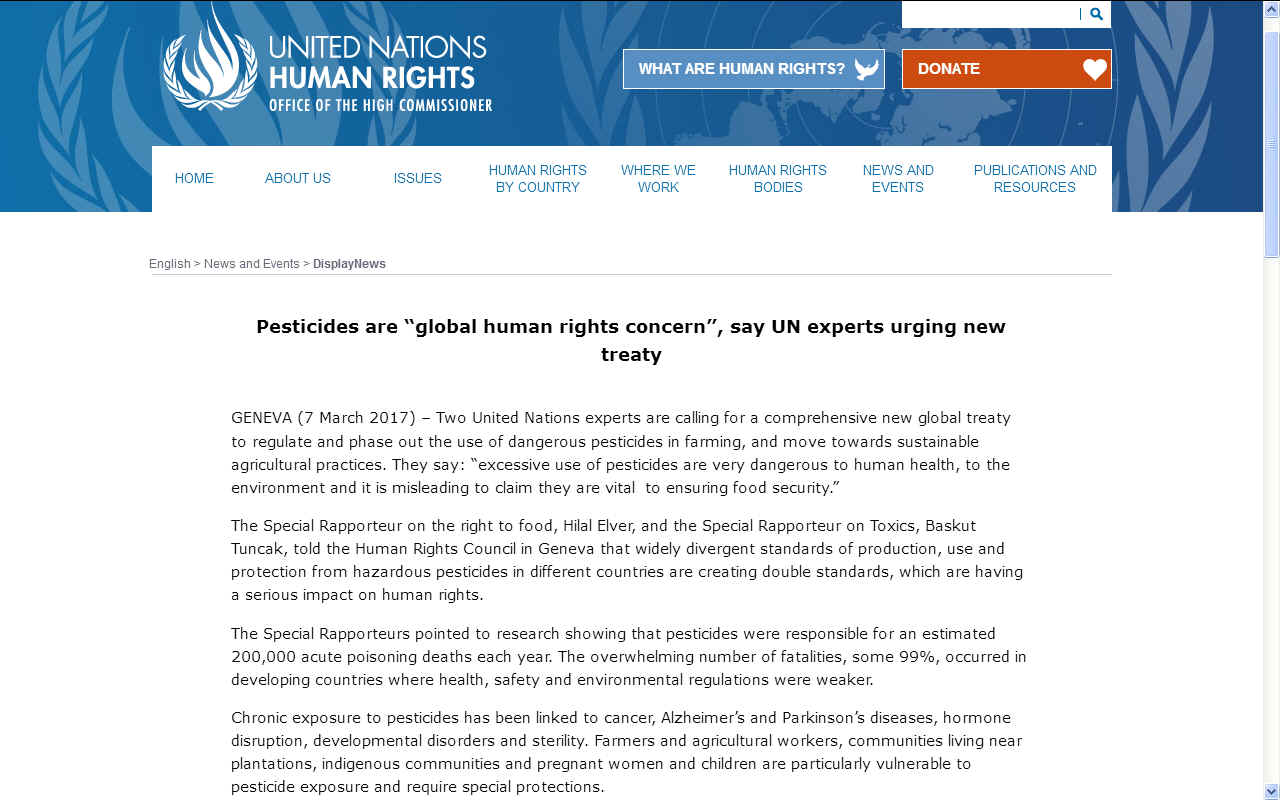
The Environmental Permitting (England and Wales) Regulations 2010
|
PART 1
1.Citation, commencement, extent and application
2.Interpretation: general
3.Interpretation: Directives
4.Exempt facilities
5.Interpretation: exempt facilities
6.Interpretation: local authority
7.Interpretation: operate a regulated facility and operator
8.Interpretation: regulated facility and class of regulated facility
9.Interpretation: relevant function
10.Giving notices, notifications and directions, and the submission of forms
PART 2
CHAPTER 1
11.Application to the Crown
12.Requirement for environmental permit
CHAPTER 2
13.Grant of an environmental permit
14.Content and form of an environmental permit
15.Conditions in relation to certain land
16.Mobile plant operating on the site of another regulated facility: conflict of permit conditions
17.Single site permits etc.
18.Consolidation of an environmental permit
19.Subsistence of an environmental permit
CHAPTER 3
20.Variation of an environmental permit
21.Transfer of an environmental permit
22.Revocation of an environmental permit: general
23.Revocation of an environmental permit: steps to be taken after the revocation takes effect
24.Notification of the surrender of an environmental permit
25.Application for the surrender of an environmental permit
CHAPTER 4
26.Preparation and revision of standard rules
27.Standard rules as conditions of an environmental permit
28.Notification of revisions of standard rules
29.Revocation of standard rules
30.Variation of an environmental permit: revocation of standard rules
CHAPTER 5
31.Appeals to an appropriate authority
PART 3
32.Discharge of functions
33.Direction to a regulator: discharge of functions by a different regulator
34.Review of environmental permits and inspection of regulated facilities
35.Specific provisions applying to environmental permits
PART 4
36.Enforcement notices
37.Suspension notices
38.Offences
39.Penalties
40.Defences
41.Offences by bodies corporate
42.Enforcement by the High Court
43.Admissibility of evidence
44.Power of court to order cause of offence to be remedied
PART 5
45.Interpretation of this Part
46.Duty of the regulator to maintain a public register
47.Exclusion from public registers of information affecting national security
48.Exclusion from public registers of confidential information
49.Procedure if the regulator considers that information may be confidential
50.Duty to determine confidentiality
51.Determination of confidentiality
52.Procedure following a determination
53.Appeals in relation to confidentiality
54.Consequences of an appeal
55.Reconsideration of confidentiality
56.Directions of the appropriate authority in relation to confidentiality
PART 6
57.Power of the regulator to prevent or remedy pollution
58.Environment Agency: notices in relation to emissions to water
59.Environment Agency: public participation statement
60.Power to require the provision of information
61.Directions to regulators and exemption registration authorities: general
62.Reference of applications to an appropriate authority
63.Directions to the Agency: installations outside the United Kingdom
64.Guidance to regulators and exemption registration authorities
65.Fees and charges in relation to the exercise of regulator’s functions by local authorities
66.Plans relating to emissions
PART 7
Chapter 1 -
67.Interpretation of this Part
Chapter 2 -
68.Further provision in relation to waste and extractive waste
Chapter 3
69.Existing permits
70.Site plans not required for existing permits
71.Review of existing groundwater permits
72.Radioactive substances exemption orders
73.Exempt water discharge activities
74.Exempt groundwater activities
75.Transitional applications
76.Transfer notices under former enactments
77.Existing notices under former enactments
78.Outstanding appeals against existing notices
79.Appeals under these Regulations against existing notices
80.Decisions under former enactments
81.Outstanding appeals against decisions under former enactments
82.Appeals under these Regulations against decisions under former enactments
83.Existing directions under former enactments
84.Public registers under former enactments
85.Recovery of expenses for disposal of radioactive waste
Chapter 4 2007 Regulations PPC
86.Existing environmental permits
87.Applications under the 2007 Regulations
88.Applications for grant of PPC permit or waste management licence
89.2007 transitional applications for grant of PPC permit, other than in relation to landfill
90.2007 transitional applications for grant of PPC permit in relation to landfill
91.2007 transitional applications for grant of PPC permit in relation to landfill: applications determined under the 2007 Regulations
92.2007 transitional applications not relating to grant of PPC permit
93.Notifications of surrender
94.Existing notices under the 2007 Regulations or former PPC or waste legislation
95.Outstanding appeals against existing notices
96.Appeals under these Regulations against existing notices
97.Decisions under the 2007 Regulations or former PPC or waste legislation
98.Outstanding appeals against decisions under the 2007 Regulations or former PPC or waste legislation
99.Appeals under these Regulations against decisions under the 2007 Regulations or former PPC or waste legislation
100.Other existing notices and instruments
101.Existing directions under the 2007 Regulations
102.Public registers
103.Existing exempt waste operations
104.Existing Part A(1) installations
105.Existing mining waste operations
Chapter 5
106.Savings
107.Consequential amendments
108.Revocations
109.Repeals
SCHEDULE 1 -
Activities, installations and mobile plant
SCHEDULE 2 -
Exempt facilities: general
SCHEDULE 3 - Exempt facilities: descriptions and conditions
SCHEDULE 4 -
Application to the Crown
SCHEDULE 5 -
Environmental permits
SCHEDULE 6 -
Appeals to the appropriate authority
SCHEDULE 7 -
Part A installations and Part A mobile plant
SCHEDULE 8 -
Part B installations and Part B mobile plant
SCHEDULE 9 -
Waste operations
SCHEDULE 10 -
Landfill
SCHEDULE 11 -
Waste motor vehicles
SCHEDULE 12 -
Waste electrical and electronic equipment
SCHEDULE 13 -
Waste incineration
SCHEDULE 14 -
SED installations
SCHEDULE 15 -
Large combustion plants
SCHEDULE 16 -
Asbestos
SCHEDULE 17 -
Titanium dioxide
SCHEDULE 18 -
Petrol vapour recovery
SCHEDULE 19 -
Waste batteries and accumulators
SCHEDULE 20 -
Mining waste operations
SCHEDULE 21 -
Water discharge activities
SCHEDULE 22 -
Groundwater activities
SCHEDULE 23 - Radioactive substances activities
SCHEDULE 24 -
Public registers
SCHEDULE 25 -
Waste and extractive waste
SCHEDULE 26 -
Consequential amendments
SCHEDULE 27 -
Revocations
SCHEDULE 28 -
Repeals
|
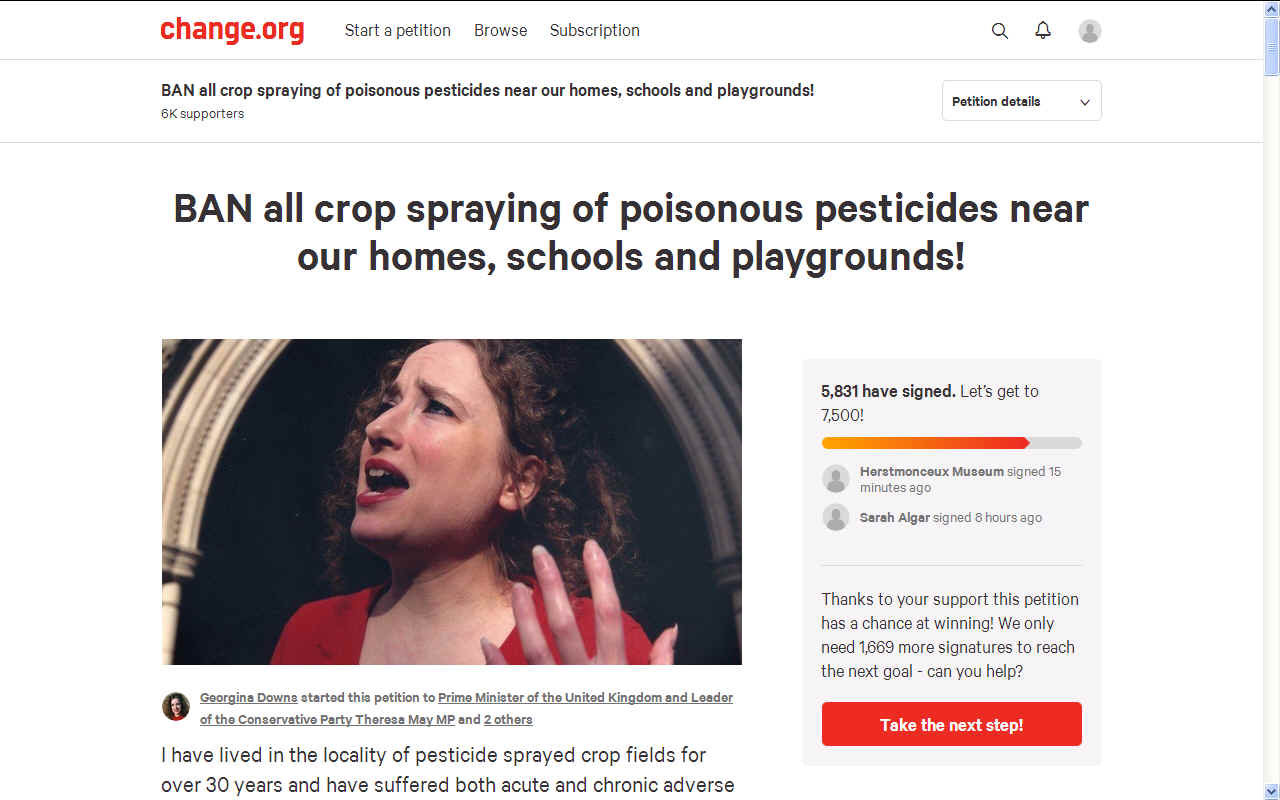
LEGAL
ISSUES
There is a live petition to ban agri chemicals from fields near homes and
schools, to be presented to the Prime Minister as soon as 7,500 signatures
are collected.
REF:
Official Journal of the European Union - L 372/19 of 12 December 2006
DIRECTIVE 2006/118/EC OF THE EUROPEAN PARLIAMENT AND OF THE COUNCIL
on the protection of groundwater against pollution and deterioration
THE EUROPEAN PARLIAMENT AND THE COUNCIL OF THE EUROPEAN UNION,
Having regard to the Treaty establishing the European Community, and in particular Article 175(1) thereof,
Having regard to the proposal from the Commission,
Having regard to the Opinion of the European Economic and Social Committee (1),
Having regard to the Opinion of the Committee of the Regions (2),
Acting in accordance with the procedure laid down in Article 251 of the Treaty (3), in the light of the joint text approved by the Conciliation Committee on 28 November 2006,
Whereas:
(1) Groundwater is a valuable natural resource and as such should be protected from deterioration and chemical pollution. This is particularly important for groundwater-dependent ecosystems and for the use of groundwater in water supply for human consumption.
(2) Groundwater is the most sensitive and the largest body of freshwater in the European Union and, in particular, also a main source of public drinking water supplies in many regions.
(3) Groundwater in bodies of water used for the abstraction of drinking water or intended for such future use must be protected in such a way that deterioration in the quality of such bodies of water is avoided in order to reduce the level of purification treatment required in the production of drinking water, in accordance with Article 7(2) and (3) of Directive 2000/60/EC of the European Parliament and of the Council of 23 October 2000 establishing a framework for Community action in the field of water policy (4).
(4) Decision No 1600/2002/EC of the European Parliament and of the Council of 22 July 2002 laying down the Sixth Community Environment Action Programme (5) includes the objective to achieve water quality levels that do not give rise to significant impacts on, and risks to, human health and the environment.
(5) In order to protect the environment as a whole, and human health in particular, detrimental concentrations of harmful pollutants in groundwater must be avoided, prevented or reduced
(6) Directive 2000/60/EC sets out general provisions for the protection and conservation of groundwater. As provided for in Article 17 of that Directive, measures to prevent and control groundwater pollution should be adopted, including criteria for assessing good groundwater chemical status and criteria for the identification of significant and sustained upward trends and for the definition of starting points for trend reversals.
(7) Having regard to the need to achieve consistent levels of protection for groundwater, quality standards and threshold values should be established, and methodologies based on a common approach developed, in order to provide criteria for the assessment of the chemical status of bodies of groundwater.
(8) Quality standards for nitrates, plant protection products and biocides should be set as Community criteria for the assessment of the chemical status of bodies of groundwater, and consistency should be ensured with Council Directive 91/676/EEC of 12 December 1991 concerning the protection of waters against pollution caused by nitrates from agricultural sources (6), Council Directive 91/414/EEC of 15 July 1991 concerning the placing of plant protection products on the market (7), and Directive 98/8/EC of the European Parliament and of the Council of 16 February 1998 concerning the placing of biocidal products on the market (8), respectively.
(9) The protection of groundwater may in some areas require a change in farming or forestry practices, which could entail a loss of income. The Common Agricultural Policy provides for funding mechanisms to implement measures to comply with Community standards, namely through Council Regulation (EC) No 1698/2005 of 20 September 2005 on support for rural development by the European Agricultural Fund for Rural Development (EAFRD) (9). With regard to groundwater protection measures, it will be the Member States' responsibility to choose their priorities and projects.
(10) Groundwater chemical status provisions do not apply to high naturally-occurring levels of substances or ions or their indicators, contained either in a body of groundwater or in associated bodies of surface water, due to specific hydro-geological conditions, which are not covered by the definition of pollution. Equally, they do not apply to temporary, spatially-limited changes in flow direction and chemical composition, which are not regarded as intrusions.
(11) Criteria should be established for the identification of any significant and sustained upward trends in pollutant concentrations and for the definition of the starting point for trend reversal, taking into account the likelihood of adverse effects on associated aquatic ecosystems or dependent terrestrial ecosystems.
(12) Member States should, where possible, use statistical procedures, provided they comply with international standards and contribute to the comparability of results of monitoring between Member States over long periods.
(13) In accordance with the third indent of Article 22(2) of Directive 2000/60/EC, Council Directive 80/68/EEC of 17 December 1979 on the protection of groundwater against pollution by certain dangerous substances (10) is to be repealed with effect from 22 December 2013. It is necessary to ensure the continuity of the protection provided by Directive 80/68/EEC with regard to measures aimed at preventing or limiting both direct and indirect inputs of pollutants into groundwater.
(14) It is necessary to distinguish between hazardous substances, inputs of which should be prevented, and other pollutants, inputs of which should be limited. Annex VIII to Directive 2000/60/EC, listing the main pollutants relevant for the water environment, should be used to identify hazardous and non-hazardous substances which present an existing or potential risk of pollution.
(15) Measures to prevent or limit inputs of pollutants into bodies of groundwater used for or intended for future use for the abstraction of water intended for human consumption, as referred to in Article 7(1) of Directive 2000/60/EC, should, in accordance with Article 7(2) of that Directive, include such measures as are necessary to ensure that under the water treatment regime applied, and in accordance with Community legislation, the resulting water will meet the requirements of Council Directive 98/83/EC of 3 November 1998 on the quality of water intended for human consumption (11). Those measures may also include, in accordance with Article 7(3) of Directive 2000/60/EC, the establishment by Member States of safeguard zones of such size as the competent national body deems necessary to protect drinking water supplies. Such safeguard zones may cover the whole territory of a Member State.
(16) In order to ensure consistent protection of groundwater, Member States sharing bodies of groundwater should coordinate their activities in respect of monitoring, the setting of threshold values, and the identification of relevant hazardous substances.
(17) Reliable and comparable methods for groundwater monitoring are an important tool for assessment of groundwater quality and also for choosing the most appropriate measures. Articles 8(3) and 20 of Directive 2000/60/EC provide for the adoption of standardised methods for analysis and monitoring of water status and, where necessary, of guidelines on implementation including monitoring.
(18) In certain circumstances, Member States should be authorised to grant exemptions from measures to prevent or limit the input of pollutants into groundwater. Any exemptions should be based on transparent criteria and be detailed in the river basin management plans.
(19) The impact on the level of environmental protection and on the functioning of the internal market of different groundwater threshold values to be defined by the Member States should be analysed.
(20) Research should be conducted in order to provide better criteria for ensuring groundwater ecosystem quality and protection. Where necessary, the findings obtained should be taken into account when implementing or revising this Directive. Such research, as well as dissemination of knowledge, experience and research findings, needs to be encouraged and funded.
(21) It is necessary to provide for transitional measures to apply during the period between the date of implementation of this Directive and the date from which Directive 80/68/EEC is repealed.
(22) Directive 2000/60/EC sets out the requirement of controls including a requirement for prior authorisation of artificial recharge or augmentation of bodies of groundwater, provided that the use of the source does not compromise the achievement of the environmental objectives established for the source or the recharged or augmented body of groundwater.
(23) Directive 2000/60/EC includes in Article 11(2) and Part B of Annex VI on the programme of measures a non-exclusive list of supplementary measures which Member States may choose to adopt as part of the programme of measures, inter alia:
— legislative instruments,
— administrative instruments, and
— negotiated agreements for the protection of the environment.
(24) The measures necessary for the implementation of this Directive should be adopted in accordance with Council Decision 1999/468/EC of 28 June 1999 laying down the procedures for the exercise of implementing powers conferred on the Commission (12).
(25) In particular, it is necessary to follow the regulatory procedure with scrutiny as regards measures of general scope designed to amend non-essential elements of this Directive, inter alia by deleting some of those elements or by supplementing this Directive by adding new non-essential elements to it,
HAVE ADOPTED THIS DIRECTIVE:
Article 1
Purpose
1. This Directive establishes specific measures as provided for in Article 17(1) and (2) of Directive 2000/60/EC in order to prevent and control groundwater pollution. These measures include in particular:
(a) criteria for the assessment of good groundwater chemical status; and
(b) criteria for the identification and reversal of significant and sustained upward trends and for the definition of starting points for trend reversals.
2. This Directive also complements the provisions preventing or limiting inputs of pollutants into groundwater already contained in Directive 2000/60/EC, and aims to prevent the deterioration of the status of all bodies of groundwater.
Article 2
Definitions
For the purposes of this Directive, the following definitions shall apply in addition to those laid down in Article 2 of Directive 2000/60/EC:
1) ‘groundwater quality standard’ means an environmental quality standard expressed as the concentration of a particular pollutant, group of pollutants or indicator of pollution in groundwater, which should not be exceeded in order to protect human health and the environment;
2) ‘threshold value’ means a groundwater quality standard set by Member States in accordance with Article 3;
3) ‘significant and sustained upward trend’ means any statistically and environmentally significant increase of concentration of a pollutant, group of pollutants, or indicator of pollution in groundwater for which trend reversal is identified as being necessary in accordance with Article 5;
4) ‘input of pollutants into groundwater’ means the direct or indirect introduction of pollutants into groundwater as a result of human activity;
5) ‘background level’ means the concentration of a substance or the value of an indicator in a body of groundwater corresponding to no, or only very minor, anthropogenic alterations to undisturbed conditions;
6) ‘baseline level’ means the average value measured at least during the reference years 2007 and 2008 on the basis of monitoring programmes implemented under Article 8 of Directive 2000/60/EC or, in the case of substances identified after these reference years, during the first period for which a representative period of monitoring data is available.
Article 3
Criteria for assessing groundwater chemical status
1. For the purposes of the assessment of the chemical status of a body or a group of bodies of groundwater pursuant to Section 2.3 of Annex V to Directive 2000/60/EC, Member States shall use the following criteria:
(a) groundwater quality standards as referred to in Annex I;
(b) threshold values to be established by Member States in accordance with the procedure set out in Part A of Annex II for the pollutants, groups of pollutants and indicators of pollution which, within the territory of a Member State, have been identified as contributing to the characterisation of bodies or groups of bodies of groundwater as being at risk, taking into account at least the list contained in Part B of Annex II.
The threshold values applicable to good chemical status shall be based on the protection of the body of groundwater in accordance with Part A, points 1, 2 and 3 of Annex II, having particular regard to its impact on, and interrelationship with, associated surface waters and directly dependent terrestrial ecosystems and wetlands and shall inter alia take into account human toxicology and ecotoxicology knowledge.
2. Threshold values can be established at the national level, at the level of the river basin district or the part of the international river basin district falling within the territory of a Member State, or at the level of a body or a group of bodies of groundwater.
3. Member States shall ensure that, for bodies of groundwater shared by two or more Member States and for bodies of groundwater within which groundwater flows across a Member State's boundary, the establishment of threshold values is subject to coordination between the Member States concerned, in accordance with Article 3(4) of Directive 2000/60/EC.
4. Where a body or a group of bodies of groundwater extends beyond the territory of the Community, the Member State(s) concerned shall endeavour to establish threshold values in coordination with the non-Member State(s) concerned, in accordance with Article 3(5) of Directive 2000/60/EC.
5. Member States shall establish threshold values pursuant to paragraph 1(b) for the first time by 22 December 2008.
All threshold values established shall be published in the river basin management plans to be submitted in accordance with Article 13 of Directive 2000/60/EC, and including a summary of the information set out in Part C of Annex II to this Directive.
6. Member States shall amend the list of threshold values whenever new information on pollutants, groups of pollutants, or indicators of pollution indicates that a threshold value should be set for an additional substance, that an existing threshold value should be amended, or that a threshold value previously removed from the list should be re-inserted, in order to protect human health and the environment.
Threshold values can be removed from the list when the body of groundwater concerned is no longer at risk from the corresponding pollutants, groups of pollutants, or indicators of pollution.
Any such changes to the list of threshold values shall be reported in the context of the periodic review of the river basin management plans.
7. The Commission shall publish a report by 22 December 2009 on the basis of the information provided by Member States in accordance with paragraph 5.
Article 4
Procedure for assessing groundwater chemical status
1. Member States shall use the procedure described in paragraph 2 to assess the chemical status of a body of groundwater. Where appropriate, Member States may group bodies of groundwater in accordance with Annex V to Directive 2000/60/EC when carrying out this procedure.
2. A body or a group of bodies of groundwater shall be considered to be of good chemical status when:
(a) the relevant monitoring demonstrates that the conditions set out in Table 2.3.2 of Annex V to Directive 2000/60/EC are being met; or
(b) the values for the groundwater quality standards listed in Annex I and the relevant threshold values established in accordance with Article 3 and Annex II are not exceeded at any monitoring point in that body or group of bodies of groundwater; or
(c) the value for a groundwater quality standard or threshold value is exceeded at one or more monitoring points but an appropriate investigation in accordance with Annex III confirms that:
(i) on the basis of the assessment referred to in paragraph 3 of Annex III, the concentrations of pollutants exceeding the groundwater quality standards or threshold values are not considered to present a significant environmental risk, taking into account, where appropriate, the extent of the body of groundwater which is affected;
(ii) the other conditions for good groundwater chemical status set out in Table 2.3.2 in Annex V to Directive 2000/60/EC are being met, in accordance with paragraph 4 of Annex III to this Directive;
(iii) for bodies of groundwater identified in accordance with Article 7(1) of Directive 2000/60/EC, the requirements of Article 7(3) of that Directive are being met, in accordance with paragraph 4 of Annex III to this Directive;
(iv) the ability of the body of groundwater or of any of the bodies in the group of bodies of groundwater to support human uses has not been significantly impaired by pollution.
3. Choice of the groundwater monitoring sites has to satisfy the requirements of Section 2.4 of Annex V to Directive 2000/60/EC on being designed so as to provide a coherent and comprehensive overview of groundwater chemical status and to provide representative monitoring data.
4. Member States shall publish a summary of the assessment of groundwater chemical status in the river basin management plans in accordance with Article 13 of Directive 2000/60/EC.
This summary, established at the level of the river basin district or the part of the international river basin district falling within the territory of a Member State, shall also include an explanation as to the manner in which exceedances of groundwater quality standards or threshold values at individual monitoring points have been taken into account in the final assessment.
5. If a body of groundwater is classified as being of good chemical status in accordance with paragraph 2(c), Member States, in accordance with Article 11 of Directive 2000/60/EC, shall take such measures as may be necessary to protect aquatic ecosystems, terrestrial ecosystems and human uses of groundwater dependent on the part of the body of groundwater represented by the monitoring point or points at which the value for a groundwater quality standard or the threshold value has been exceeded.
Article 5
Identification of significant and sustained upward trends and the definition of starting points for trend reversals
1. Member States shall identify any significant and sustained upward trend in concentrations of pollutants, groups of pollutants or indicators of pollution found in bodies or groups of bodies of groundwater identified as being at risk and define the starting point for reversing that trend, in accordance with Annex IV.
2. Member States shall, in accordance with Part B of Annex IV, reverse trends which present a significant risk of harm to the quality of aquatic ecosystems or terrestrial ecosystems, to human health, or to actual or potential legitimate uses of the water environment, through the programme of measures referred to in Article 11 of Directive 2000/60/EC, in order progressively to reduce pollution and prevent deterioration of groundwater.
3. Member States shall define the starting point for trend reversal as a percentage of the level of the groundwater quality standards set out in Annex I and of the threshold values established pursuant to Article 3, on the basis of the identified trend and the environmental risk associated therewith, in accordance with Part B, point 1 of Annex IV.
4. In the river basin management plans to be submitted in accordance with Article 13 of Directive 2000/60/EC, Member States shall summarise:
(a) the way in which the trend assessment from individual monitoring points within a body or a group of bodies of groundwater has contributed to identifying, in accordance with Section 2.5 of Annex V to that Directive, that those bodies are subject to a significant and sustained upward trend in concentration of any pollutant or a reversal of that trend; and
(b) the reasons for the starting points defined pursuant to paragraph 3.
5. Where necessary to assess the impact of existing plumes of pollution in bodies of groundwater that may threaten the achievement of the objectives in Article 4 of Directive 2000/60/EC, and in particular, those plumes resulting from point sources and contaminated land, Member States shall carry out additional trend assessments for identified pollutants in order to verify that plumes from contaminated sites do not expand, do not deteriorate the chemical status of the body or group of bodies of groundwater, and do not present a risk for human health and the environment. The results of these assessments shall be summarised in the river basin management plans to be submitted in accordance with Article 13 of Directive 2000/60/EC.
Article 6
Measures to prevent or limit inputs of pollutants into groundwater
1. In order to achieve the objective of preventing or limiting inputs of pollutants into groundwater, established in accordance with Article 4(1)(b)(i) of Directive 2000/60/EC, Member States shall ensure that the programme of measures established in accordance with Article 11 of that Directive includes:
(a) all measures necessary to prevent inputs into groundwater of any hazardous substances, without prejudice to paragraphs 2 and 3. In identifying such substances, Member States shall in particular take account of hazardous substances belonging to the families or groups of pollutants referred to in points 1 to 6 of Annex VIII to Directive 2000/60/EC, as well as of substances belonging to the families or groups of pollutants referred to in points 7 to 9 of that Annex, where these are considered to be hazardous;
(b) for pollutants listed in Annex VIII to Directive 2000/60/EC which are not considered hazardous, and any other non-hazardous pollutants not listed in that Annex considered by Member States to present an existing or potential risk of pollution, all measures necessary to limit inputs into groundwater so as to ensure that such inputs do not cause deterioration or significant and sustained upward trends in the concentrations of pollutants in groundwater. Such measures shall take account, at least, of established best practice, including the Best Environmental Practice and Best Available Techniques specified in the relevant Community legislation.
For the purpose of establishing measures referred to in points (a) or (b), Member States may, as a first step, identify the circumstances under which the pollutants listed in Annex VIII to Directive 2000/60/EC, in particular essential metals and their compounds referred to in point 7 of that Annex, are to be considered hazardous or non-hazardous.
2. Inputs of pollutants from diffuse sources of pollution having an impact on the groundwater chemical status shall be taken into account whenever technically possible.
3. Without prejudice to any more stringent requirements in other Community legislation, Member States may exempt from the measures required by paragraph 1 inputs of pollutants that are:
(a) the result of direct discharges authorised in accordance with Article 11(3)(j) of Directive 2000/60/EC;
(b) considered by the competent authorities to be of a quantity and concentration so small as to obviate any present or future danger of deterioration in the quality of the receiving groundwater;
(c) the consequences of accidents or exceptional circumstances of natural cause that could not reasonably have been foreseen, avoided or mitigated;
(d) the result of artificial recharge or augmentation of bodies of groundwater authorised in accordance with Article 11(3)(f) of Directive 2000/60/EC;
(e) in the view of the competent authorities incapable, for technical reasons, of being prevented or limited without using:
(i) measures that would increase risks to human health or to the quality of the environment as a whole; or
(ii) disproportionately costly measures to remove quantities of pollutants from, or otherwise control their percolation in, contaminated ground or subsoil; or
(f) the result of interventions in surface waters for the purposes, amongst others, of mitigating the effects of floods and droughts, and for the management of waters and waterways, including at international level. Such activities, including cutting, dredging, relocation and deposition of sediments in surface water, shall be conducted in accordance with general binding rules, and, where applicable, with permits and authorisations issued on the basis of such rules, developed by the Member States for that purpose, provided that such inputs do not compromise the achievement of the environmental objectives established for the water bodies concerned in accordance with Article 4(1)(b) of Directive 2000/60/EC.
The exemptions provided for in points (a) to (f) may be used only where the Member States' competent authorities have established that efficient monitoring of the bodies of groundwater concerned, in accordance with point 2.4.2 of Annex V to Directive 2000/60/EC, or other appropriate monitoring, is being carried out.
4. The competent authorities of the Member States shall keep an inventory of the exemptions referred to in paragraph 3 for the purpose of notification, upon request, to the Commission.
Article 7
Transitional arrangements
In the period between 16 January 2009 and 22 December 2013, any new authorisation procedure pursuant to Articles 4 and 5 of Directive 80/68/EEC shall take into account the requirements set out in Articles 3, 4 and 5 of this Directive.
Article 8
Technical adaptations
1. Parts A and C of Annex II and Annexes III and IV may be amended, in the light of scientific and technical progress, in accordance with the regulatory procedure with scrutiny referred to in Article 9(2), taking into consideration the period for reviewing and updating river basin management plans, as referred to in Article 13(7) of Directive 2000/60/EC.
2. Part B of Annex II may be amended, in accordance with the regulatory procedure with scrutiny referred to in Article 9(2), in order to add new pollutants or indicators.
Article 9
Committee procedure
1. The Commission shall be assisted by a committee.
2. Where reference is made to this paragraph, Article 5a (1) to (4) and Article 7 of Decision 1999/468/EC shall apply, having regard to the provisions of Article 8 thereof.
Article 10
Review
Without prejudice to Article 8, the Commission shall review Annexes I and II to this Directive by 16 January 2013, and thereafter every six years. Based on the review, it shall, if appropriate, come forward with legislative proposals, in accordance with the procedure laid down in Article 251 of the Treaty, to amend Annexes I and/or II. In its review and in preparing any proposal, the Commission shall take account of all relevant information, which might include the results of the monitoring programmes implemented under Article 8 of Directive 2000/60/EC, of Community research programmes, and/or of recommendations from the Scientific Committee on Health and Environmental Risks, Member States, the European Parliament, the European Environment Agency, European business organisations and European environmental organisations.
Article 11
Evaluation
The report by the Commission provided for under Article 18(1) of Directive 2000/60/EC shall for groundwater include an evaluation of the functioning of this Directive in relation to other relevant environmental legislation, including consistency therewith.
Article 12
Implementation
Member States shall bring into force the laws, regulations and administrative provisions necessary to comply with this Directive before 16 January 2009. They shall forthwith inform the Commission thereof.
When Member States adopt these measures, they shall contain a reference to this Directive or shall be accompanied by such reference on the occasion of their official publication. The methods of making such reference shall be laid down by Member States.
Article 13
Entry into force
This Directive shall enter into force on the twentieth day following that of its publication in the Official Journal of the European Union.
Article 14
Addressees
This Directive is addressed to the Member States.
Done at Strasbourg, 12 December 2006.
For the European Parliament
The President
J. BORRELL FONTELLES
For the Council
The President
M. PEKKARINEN
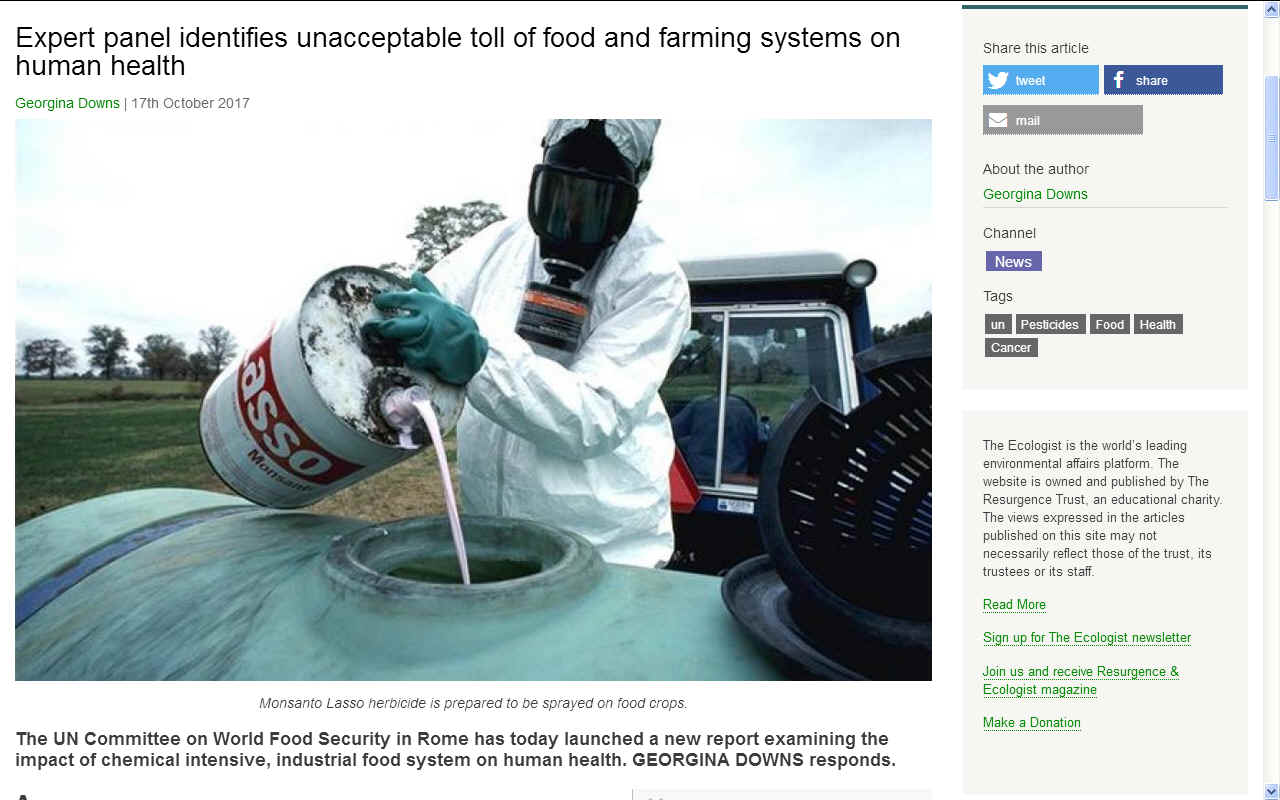
ANNEX I
- GROUNDWATER QUALITY STANDARDS
1. For the purposes of assessing groundwater chemical status in accordance with Article 4, the following groundwater quality standards will be the quality standards referred to in Table 2.3.2 in Annex V to Directive 2000/60/EC and established in accordance with Article 17 of that Directive.
Pollutant Quality standards
* Nitrates - 50 mg/l
Active substances in pesticides,
including their relevant metabolites, 0,1 μg/l
degradation and reaction products
0,5 μg/l (total)
2. The results of the application of the quality standards for pesticides in the manner specified for the purposes of this Directive will be without prejudice to the results of the risk assessment procedures required by Directive 91/414/EEC or Directive 98/8/EC.
3. Where, for a given body of groundwater, it is considered that the groundwater quality standards could result in failure to achieve the environmental objectives specified in Article 4 of Directive 2000/60/EC for associated bodies of surface water, or in any significant diminution of the ecological or chemical quality of such bodies, or in any significant damage to terrestrial ecosystems which depend directly on the body of groundwater, more stringent threshold values will be established in accordance with Article 3 and Annex II to this Directive. Programmes and measures required in relation to such a threshold value will also apply to activities falling within the scope of Directive 91/676/EEC.
(1) ‘Pesticides’ means plant protection products and biocidal products as defined in Article 2 of Directive 91/414/EEC and in Article 2 of Directive 98/8/EC, respectively.
(2) ‘Total’ means the sum of all individual pesticides detected and quantified in the monitoring procedure, including their relevant metabolites, degradation and reaction products.
ANNEX II
THRESHOLD VALUES FOR GROUNDWATER POLLUTANTS AND INDICATORS OF POLLUTION
Part A
Guidelines for the establishment of threshold values by Member States in accordance with Article 3
Member States will establish threshold values for all pollutants and indicators of pollution which, pursuant to the characterisation performed in accordance with Article 5 of Directive 2000/60/EC, characterise bodies or groups of bodies of groundwater as being at risk of failing to achieve good groundwater chemical status.
Threshold values will be established in such a way that, should the monitoring results at a representative monitoring point exceed the thresholds, this will indicate a risk that one or more of the conditions for good groundwater chemical status referred to in Article 4(2)(c)(ii), (iii) and (iv) are not being met.
When establishing threshold values, Member States will consider the following guidelines:
1) the determination of threshold values should be based on:
(a) the extent of interactions between groundwater and associated aquatic and dependent terrestrial ecosystems;
(b) the interference with actual or potential legitimate uses or functions of groundwater;
(c) all pollutants which characterise bodies of groundwater as being at risk, taking into account the minimum list set out in part B;
(d) hydro-geological characteristics including information on background levels and water balance;
2) the determination of threshold values should also take account of the origins of the pollutants, their possible natural occurrence, their toxicology and dispersion tendency, their persistence and their bioaccumulation potential;
3) wherever elevated background levels of substances or ions or their indicators occur due to natural hydro-geological reasons, these background levels in the relevant body of groundwater shall be taken into account when establishing threshold values;
4) the determination of threshold values should be supported by a control mechanism for the data collected, based on an evaluation of data quality, analytical considerations, and background levels for substances which may occur both naturally and as a result of human activities.
Part B
Minimum list of pollutants and their indicators for which Member States have to consider establishing threshold values in accordance with Article 3
1. Substances or ions or indicators which may occur both naturally and/or as a result of human activities
Arsenic
Cadmium
Lead
Mercury
Ammonium
Chloride
Sulphate
2. Man-made synthetic substances
Trichloroethylene
Tetrachloroethylene
3. Parameters indicative of saline or other intrusions (1)
Conductivity
Part C
Information to be provided by Member States with regard to the pollutants and their indicators for which threshold values have been established
Member States will summarise, in the river basin management plans to be submitted in accordance with Article 13 of Directive 2000/60/EC, the way the procedure set out in Part A of this Annex has been followed.
In particular, Member States will provide, where feasible:
(a) information on the number of bodies or groups of bodies of groundwater characterised as being at risk and on the pollutants and indicators of pollution which contribute to this classification, including the observed concentrations/values;
(b) information on each of the bodies of groundwater characterised as being at risk, in particular the size of the bodies, the relationship between the bodies of groundwater and the associated surface waters and directly dependent terrestrial ecosystems, and, in the case of naturally-occurring substances, the natural background levels in the bodies of groundwater;
(c) the threshold values, whether they apply at the national level, at the level of the river basin district or the part of the international river basin district falling within the territory of the Member State, or at the level of a body or a group of bodies of groundwater;
(d) the relationship between the threshold values and:
(i) in the case of naturally-occurring substances, the observed background levels,
(ii) the environmental quality objectives and other standards for water protection that exist at national, Community or international level, and
(iii) any relevant information concerning the toxicology, eco-toxicology, persistence, bioaccumulation potential, and dispersion tendency of the pollutants.
(1) With regard to saline concentrations resulting from human activities, Member States may decide to establish threshold values either for sulphate and chloride or for conductivity.
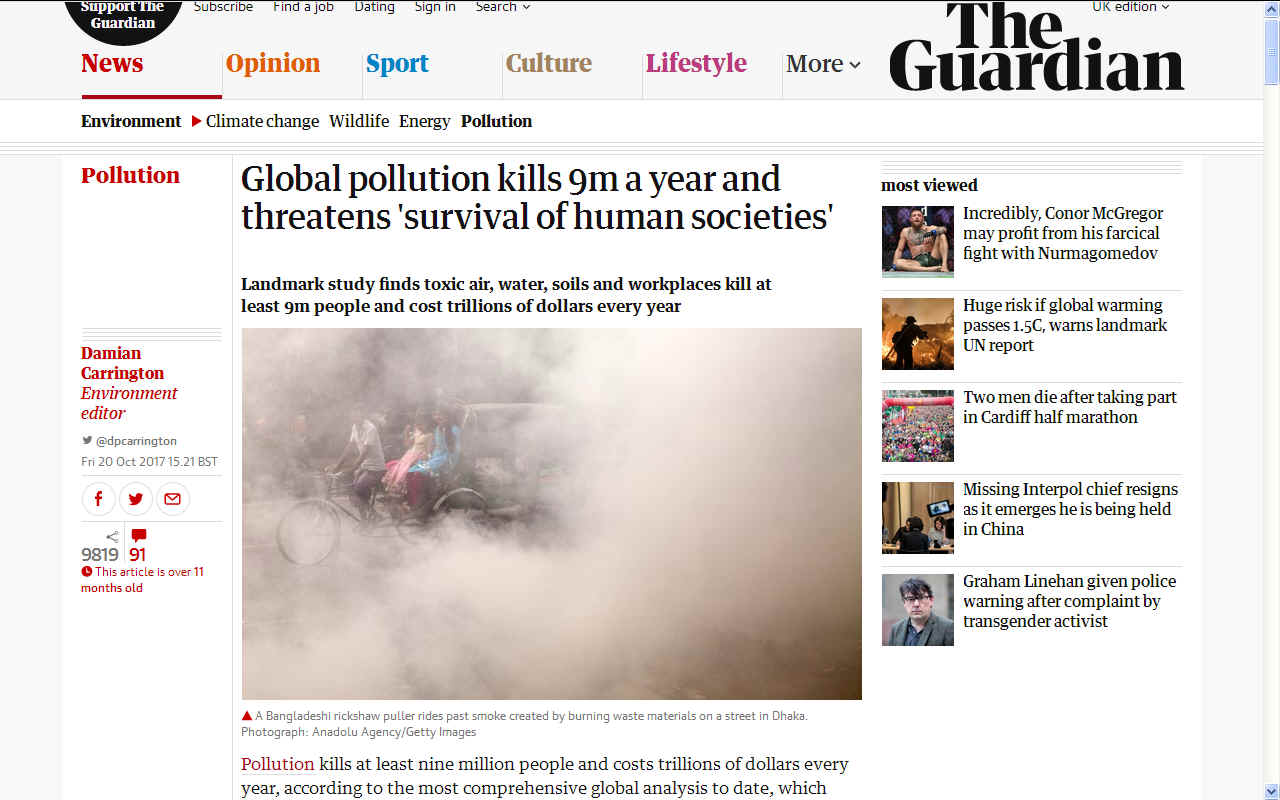
ANNEX III - ASSESSMENT OF GROUNDWATER CHEMICAL STATUS
1. The assessment procedure for determining the chemical status of a body or a group of bodies of groundwater will be carried out in relation to all bodies or groups of bodies of groundwater characterised as being at risk and in relation to each of the pollutants which contribute to the body or group of bodies of groundwater being so characterised.
2. In undertaking any investigations referred to in Article 4(2)(c), Member States will take into account:
(a) the information collected as part of the characterisation to be carried out in accordance with Article 5 of Directive 2000/60/EC and with Sections 2.1, 2.2 and 2.3 of Annex II thereto;
(b) the results of the groundwater monitoring network obtained in accordance with Section 2.4 of Annex V to Directive 2000/60/EC; and
(c) any other relevant information including a comparison of the annual arithmetic mean concentration of the relevant pollutants at a monitoring point with the groundwater quality standards set out in Annex I and the threshold values set by Member States in accordance with Article 3 and Annex II.
3. For the purposes of investigating whether the conditions for good groundwater chemical status referred to in Article 4(2)(c)(i) and (iv) are met, Member States will, where relevant and necessary, and on the basis of appropriate aggregations of the monitoring results, supported where necessary by concentration estimations based on a conceptual model of the body or group of bodies of groundwater, estimate the extent of the body of groundwater having an annual arithmetic mean concentration of a pollutant higher than a groundwater quality standard or a threshold value.
4. For the purposes of investigating whether the conditions for good groundwater chemical status referred to in Article 4(2)(c)(ii) and (iii) are met, Member States will, where relevant and necessary, and on the basis of relevant monitoring results and of a suitable conceptual model of the body of groundwater, assess:
(a) the impact of the pollutants in the body of groundwater;
(b) the amounts and the concentrations of the pollutants being, or likely to be, transferred from the body of groundwater to the associated surface waters or directly dependent terrestrial ecosystems;
(c) the likely impact of the amounts and concentrations of the pollutants transferred to the associated surface waters and directly dependent terrestrial ecosystems;
(d) the extent of any saline or other intrusions into the body of groundwater; and
(e) the risk from pollutants in the body of groundwater to the quality of water abstracted, or intended to be abstracted, from the body of groundwater for human consumption.
5.
Member States will present the groundwater chemical status of a body or a group of bodies of groundwater on maps in accordance with Sections 2.4.5 and 2.5 of Annex V to Directive 2000/60/EC. In addition, Member States will indicate on these maps all monitoring points where groundwater quality standards and/or threshold values are exceeded, where relevant and feasible.
ANNEX IV - IDENTIFICATION AND REVERSAL OF SIGNIFICANT AND SUSTAINED UPWARD TRENDS
Part A
Identification of significant and sustained upward trends
Member States will identify significant and sustained upward trends in all bodies or groups of bodies of groundwater that are characterised as being at risk in accordance with Annex II to Directive 2000/60/EC, taking into account the following requirements:
1) in accordance with Section 2.4 of Annex V to Directive 2000/60/EC, the monitoring programme will be so designed as to detect significant and sustained upward trends in concentrations of the pollutants identified pursuant to Article 3 of this Directive;
2) the procedure for the identification of significant and sustained upward trends will be based on the following elements:
(a) monitoring frequencies and monitoring locations will be selected such as are sufficient to:
(i) provide the information necessary to ensure that such upward trends can be distinguished from natural variation with an adequate level of confidence and precision;
(ii) enable such upward trends to be identified in sufficient time to allow measures to be implemented in order to prevent, or at least mitigate as far as practicable, environmentally significant detrimental changes in groundwater quality. This identification will be carried out for the first time by 2009, if possible, and will take into account existing data, in the context of the report on trend identification within the first river basin management plan referred to in Article 13 of Directive 2000/60/EC, and at least every six years thereafter;
(iii) take into account the physical and chemical temporal characteristics of the body of groundwater, including groundwater flow conditions and recharge rates and percolation time through soil or subsoil;
(b) the methods of monitoring and analysis used will conform to international quality control principles, including, if relevant, CEN or national standardised methods, to ensure equivalent scientific quality and comparability of the data provided;
(c) the assessment will be based on a statistical method, such as regression analysis, for trend analysis in time series of individual monitoring points;
(d) in order to avoid bias in trend identification, all measurements below the quantification limit will be set to half of the value of the highest quantification limit occurring in time series, except for total pesticides;
3) the identification of significant and sustained upward trends in the concentrations of substances which occur both naturally and as a result of human activities will consider the baseline levels and, where such data are available, the data collected before the start of the monitoring programme in order to report on trend identification within the first river basin management plan referred to in Article 13 of Directive 2000/60/EC.
Part B
Starting points for trend reversals
Member States will reverse identified significant and sustained upward trends, in accordance with Article 5, taking into account the following requirements:
1) the starting point for implementing measures to reverse significant and sustained upward trends will be when the concentration of the pollutant reaches 75 % of the parametric values of the groundwater quality standards set out in Annex I and of the threshold values established pursuant to Article 3, unless:
(a) an earlier starting point is required to enable trend reversal measures to prevent most cost-effectively, or at least mitigate as far as possible, any environmentally significant detrimental changes in groundwater quality;
(b) a different starting point is justified where the detection limit does not allow for establishing the presence of a trend at 75 % of the parametric values; or
(c) the rate of increase and the reversibility of the trend are such that a later starting point for trend reversal measures would still enable such measures to prevent most cost-effectively, or at least mitigate as far as possible, any environmentally significant detrimental changes in groundwater quality. Such later starting point may not lead to any delay in achieving the deadline for the environmental objectives.
For activities falling within the scope of Directive 91/676/EEC, the starting point for implementing measures to reverse significant and sustained upward trends will be established in accordance with that Directive and with Directive 2000/60/EC and, in particular, adhering to environmental objectives for water protection as set out in Article 4 of Directive 2000/60/EC;
2) once a starting point has been established for a body of groundwater characterised as being at risk in accordance with Section 2.4.4 of Annex V to Directive 2000/60/EC and pursuant to point 1 above, it will not be changed during the six-year cycle of the river basin management plan required in accordance with Article 13 of Directive 2000/60/EC;
3) trend reversals will be demonstrated, taking into account relevant monitoring provisions contained in Part A, point 2.
HERSTMONCEUX MUSEUM LTD
Southern Water
TRACKED POST
Developer Services
Sparrowgrove House
Otterbourne, Hampshire
SO21 2SW
12 July 2018
Dear Sir or Madam:
LAND ADJACENT TO LIME CROSS RECREATIONAL GROUND
BN27 4SX - WD/2015/0090/MAO
Further to our call to your offices this afternoon, we were unable to get through to discuss any progress with the above planning application for 70 houses in Herstmonceux.
We write with reference to this grant of planning permission, subject to conditions, and in particular in relation to a letter from yourselves to
Wealden District Council dated 09/02/2015, bearing a plan reference number: PLAN-008728.
We note that you advised that the wastewater treatment works for Lime Park could not be used in connection with the above application. We also note that the proposed development would require improvements to the sewerage system, it being inadequate for another 70 houses in 2015. The matter of drainage into the ponds in Lime Park is also of some concern.
We wondered if there had been any application to you to upgrade the present system and if so where we might see such application details.
We are concerned that the arrangements for drain off will be insufficient to protect the
ancient well that supplies drinking water to a number of concerns in Lime Park and has done so over the last 35 years, with at least another 100 years and more by way of history of use.
The hill above this well is to be built upon according to the site plan, where herbicides and pesticides will percolate through the ground water into this well poisoning the water supply and destroying an ancient monument in the process. We wondered if you had been apprised of these facts?
If we do not receive any reply advising that you had been informed as to the above within the next fourteen days we will assume that
Wealden District Council did not so advise of the impending contamination and intend using the content of this letter for all purposes in connection with seeking correction and securing of this sustainable water supply.
We look forward to your reply and thank you in anticipation.
Yours sincerely,
for Herstmonceux Museum Ltd
MAJOR
OUTLINE APPLICATION HERSTMONCEUX WD/2015/0090/MAO - CONDITIONS
The officer dealing with the above application for Wealden District
Council is Graham Kean.
His Memorandum dated 12 May 2015 records these observation for Mrs Claire
Turner:
1.2. In accordance with that condition:
· A survey has been undertaken by the Sewerage Undertaker (Southern Water) which has resulted in a Section 98 Sewer Requisition in order to provide a suitable offsite sewer for the disposal of foul water from the development. Southern Water’s reference is SWS-S98-000519 v2, dated 10/11/2017 (copy of letter attached in Appendix 1) and has been
accepted and payment made in order to progress; and · A full drainage design has been undertaken for the onsite foul drainage
The site is located off Gardner Street, to the south-east of Herstmonceux, and is centered on national grid reference E563798, N112404.
Existing public foul sewers have been located within Gardner Street to the north. To the northwest, within Gardner Street, is a foul network which runs east-west before running north to a pumping station (Gardner Street WPS). The pump main from the existing pumping station runs south to
Gardner Street and then west-east along Gardner Street, discharging into a gravity main
approximately 300m east of the site. This gravity sewer runs north-east to the Windmill Hill Waste Water Works.
3.6. A second foul network runs from a point to the south of the site discharging into the Lime Park Herstmonceux Waste Water Works, approximately 300m to the south.
The existing site is greenfield and no existing connections to foul infrastructure have been identified.
4.2. Investigations were undertaken as to whether the existing Lime Park Waste Water Works could be connected to under gravity and it was confirmed that the works themselves were not adequately sized to receive flows from a further 70 residential dwellings and would require
reconstruction and consenting.
4.3. Any foul drainage solution would need to be received by existing or new infrastructure to the north of the site and would require a pumped solution, to overcome the topography.
4.4. Under Section 98 of the Water Industry Act, Southern Water were instructed to progress a solution of the offsite infrastructure upgrades required to support the development. Appendix 1 contains the offer letter received from Southern Water under this process.
4.5. The technical solution offered by Southern Water is to provide new and improved infrastructure in Chapel Row and Gardner Street as part of the Section 98 Requisition.
A gravity system of foul drainage has been proposed, based upon the approved illustrative layout, which collects the waste from the 70 units and drains to the south-west corner of the site, adjacent to Chapel Row.
5.3. A private pumping station has been proposed adjacent to Chapel Row which will collect the foul flows and pump them into the proposed foul rising main provided by Southern Water under the Section 98 application.
Pumping station design (Private)
5.6.1. The design of the pumping station has been based upon the following design standards and documents:
· BS EN 752; and
· Building Regulations 2010 part H.
5.6.2. Storage capacity within the pump station has been provided in accordance with the
requirements setout by Building Regulations, Clause 2.39. The receiving chamber has been
sized to contain 24 hour inflow to allow for disruption of service. The following design criteria
has been applied using the mix of residential units and flow volumes (in accordance with British
Water Flows and Loads 4) below:
5.6.4. Due to the overall depth of the pump chamber installation (circa 6.5m) it is likely to be
adversely impacted by groundwater, which has been profiled at a depth of 42.000m AOD in the area. Additional measures both in the final design and construction of the chamber will be required to
counter buoyancy and groundwater infiltration of the excavation.
CONTACT
ENVIRONMENT AGENCY
..
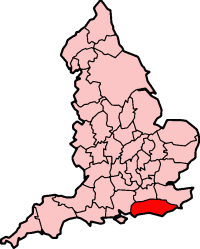
LINKS
& REFERENCE
https://www.thechronicle.com.au/news/explosive-claims-over-dirty-water/2944958/
https://www.mrw.co.uk/latest/gove-waste-sectors-most-urgent-problem-is-crime/10023465.article
https://eur-lex.europa.eu/legal-content/EN/TXT/?qid=1537252125330&uri=CELEX:32006L0118
http://www.legislation.gov.uk/ukdsi/2010/9780111491423/contents
www.change.org-the-prime-minister-rt-hon-theresa-may-mp-ban-all-crop-spraying-of-poisonous-pesticides-near-our-homes-schools-and-playgrounds
https://theecologist.org/2018/sep/14/new-uk-agriculture-bill-triumph-or-travesty
http://www.environmentlaw.org.uk/rte.asp?id=110
https://developerservices.southernwater.co.uk/CapacityCheck/FreshWater
https://developerservices.southernwater.co.uk/
https://www.southernwater.co.uk/
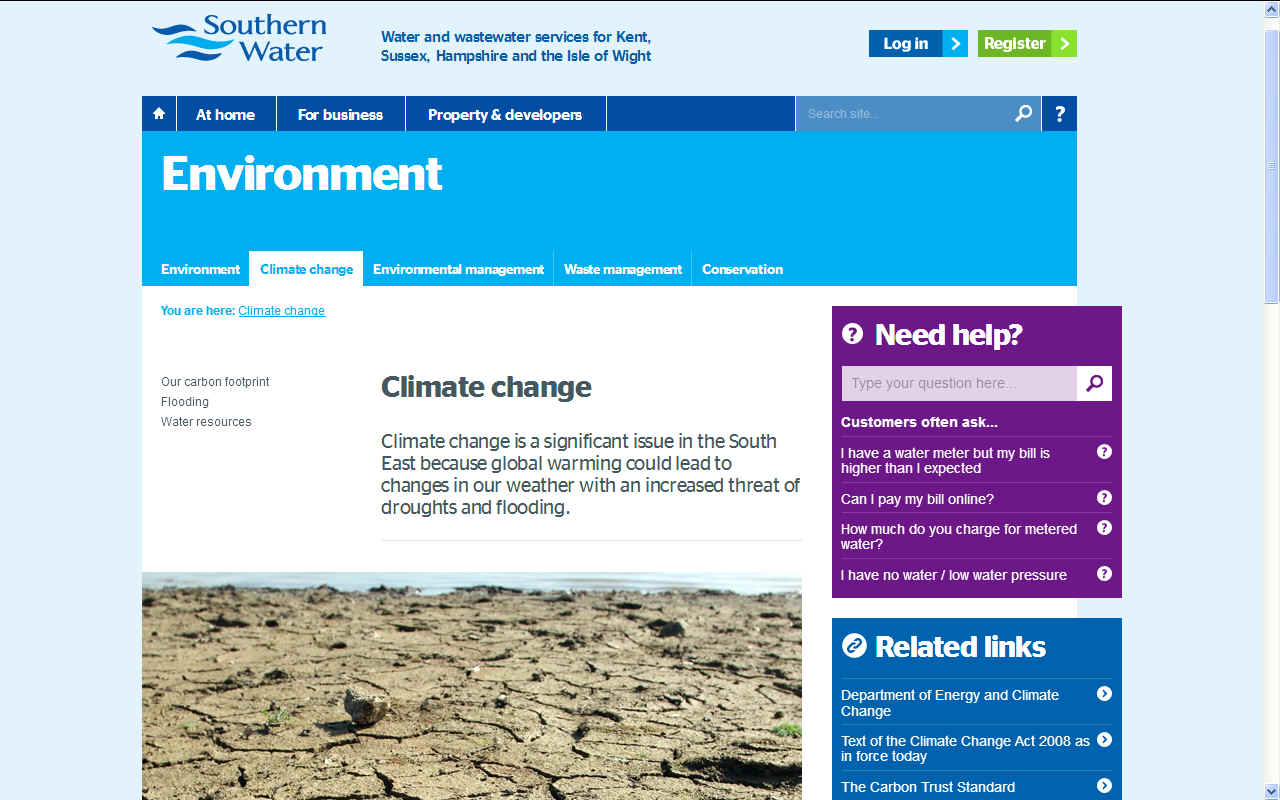
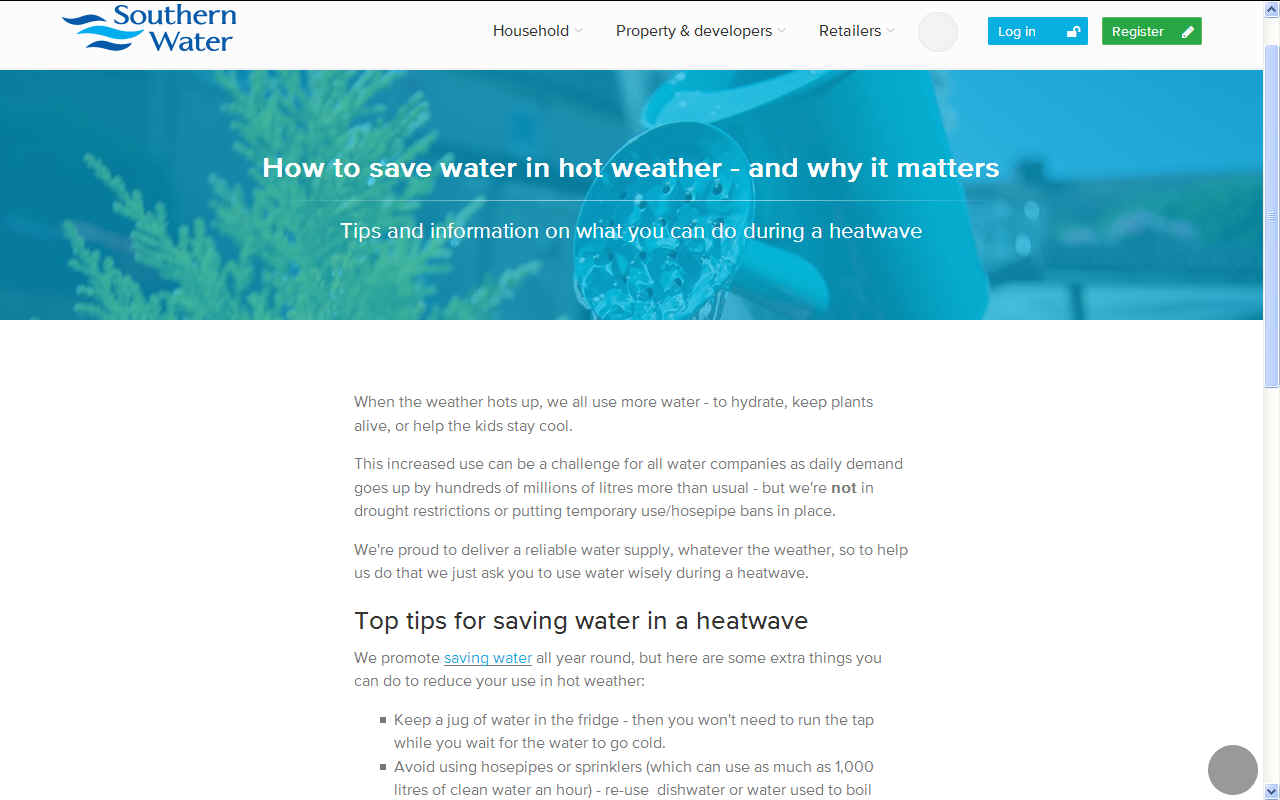
|














